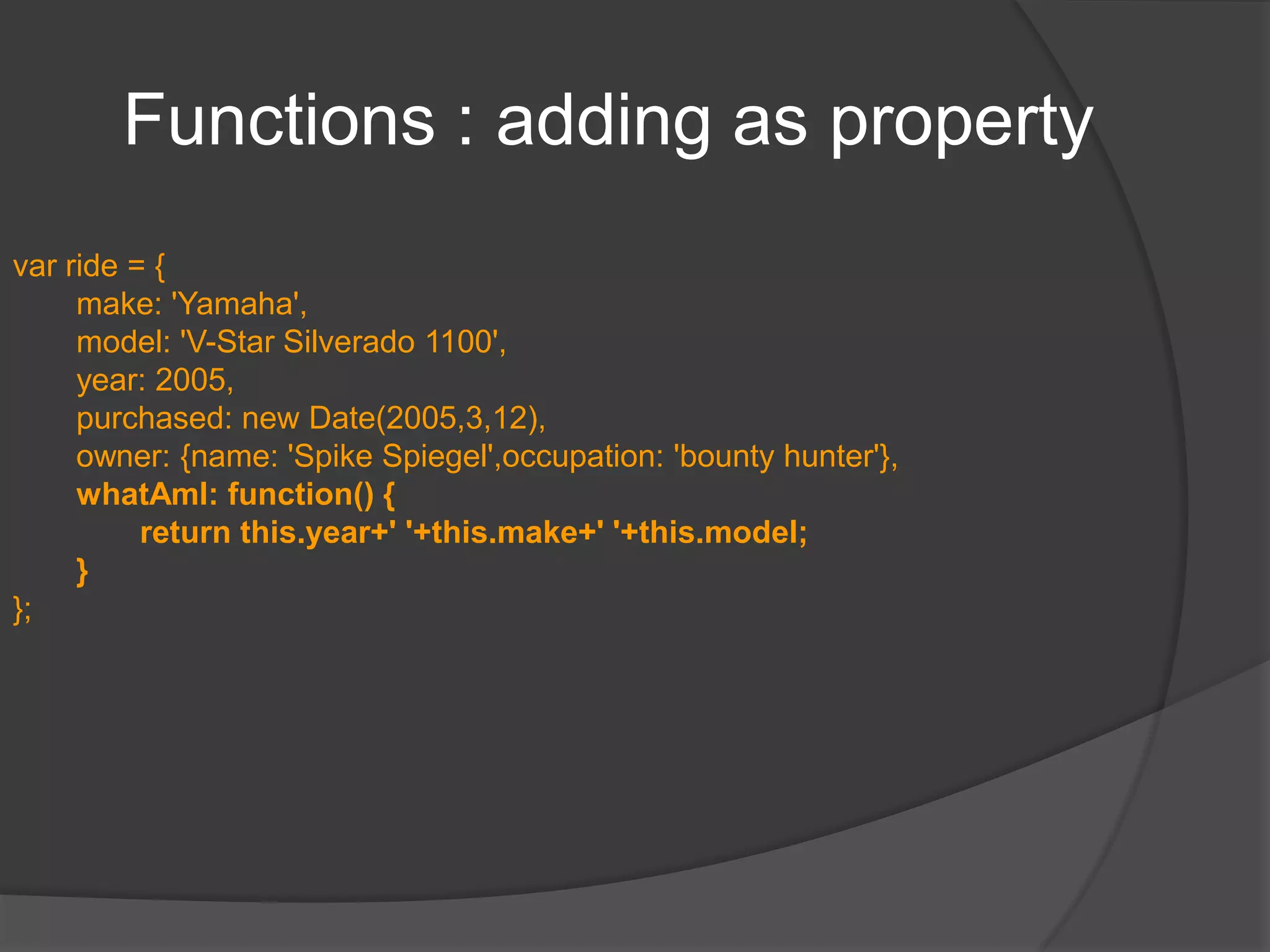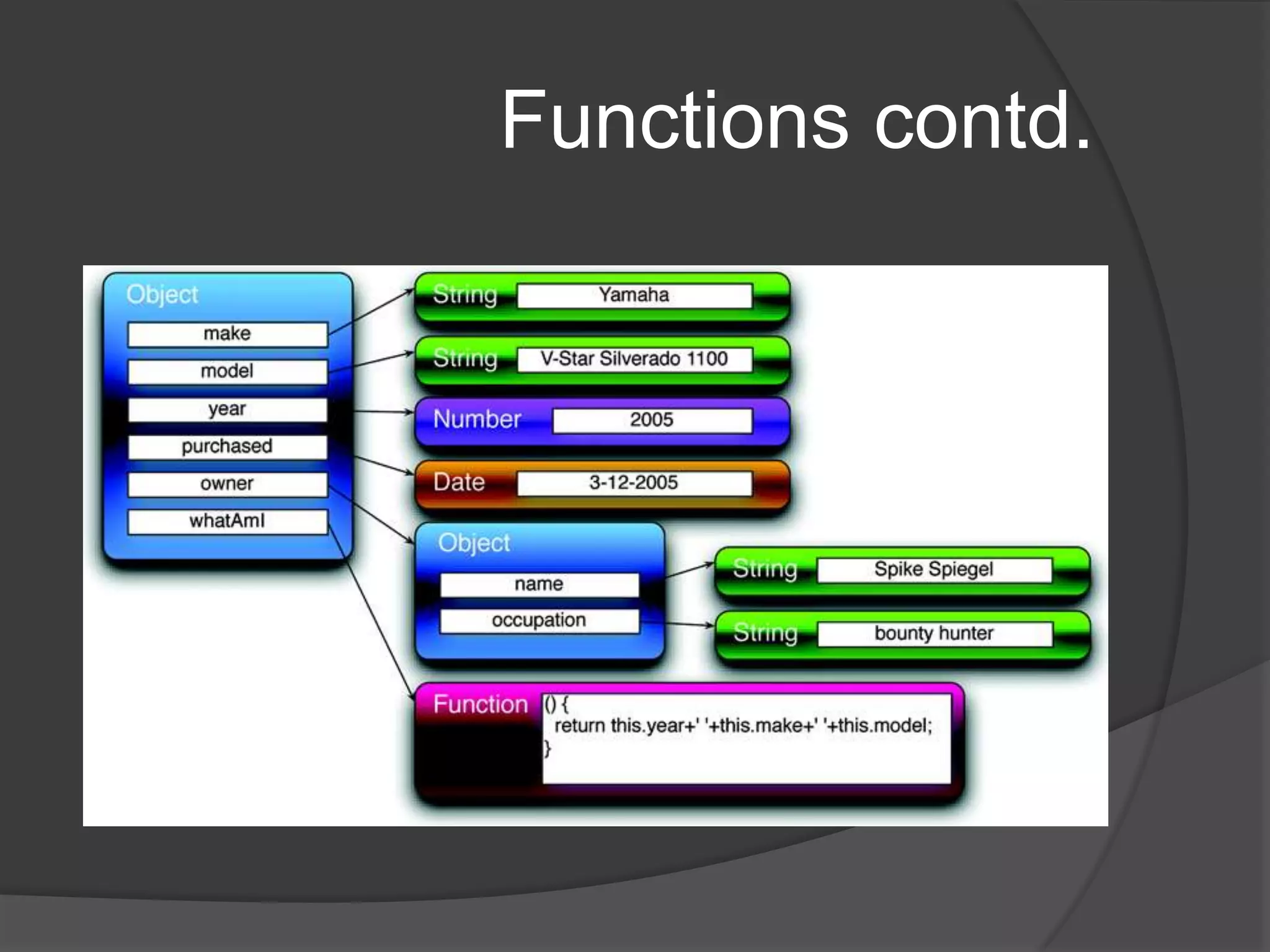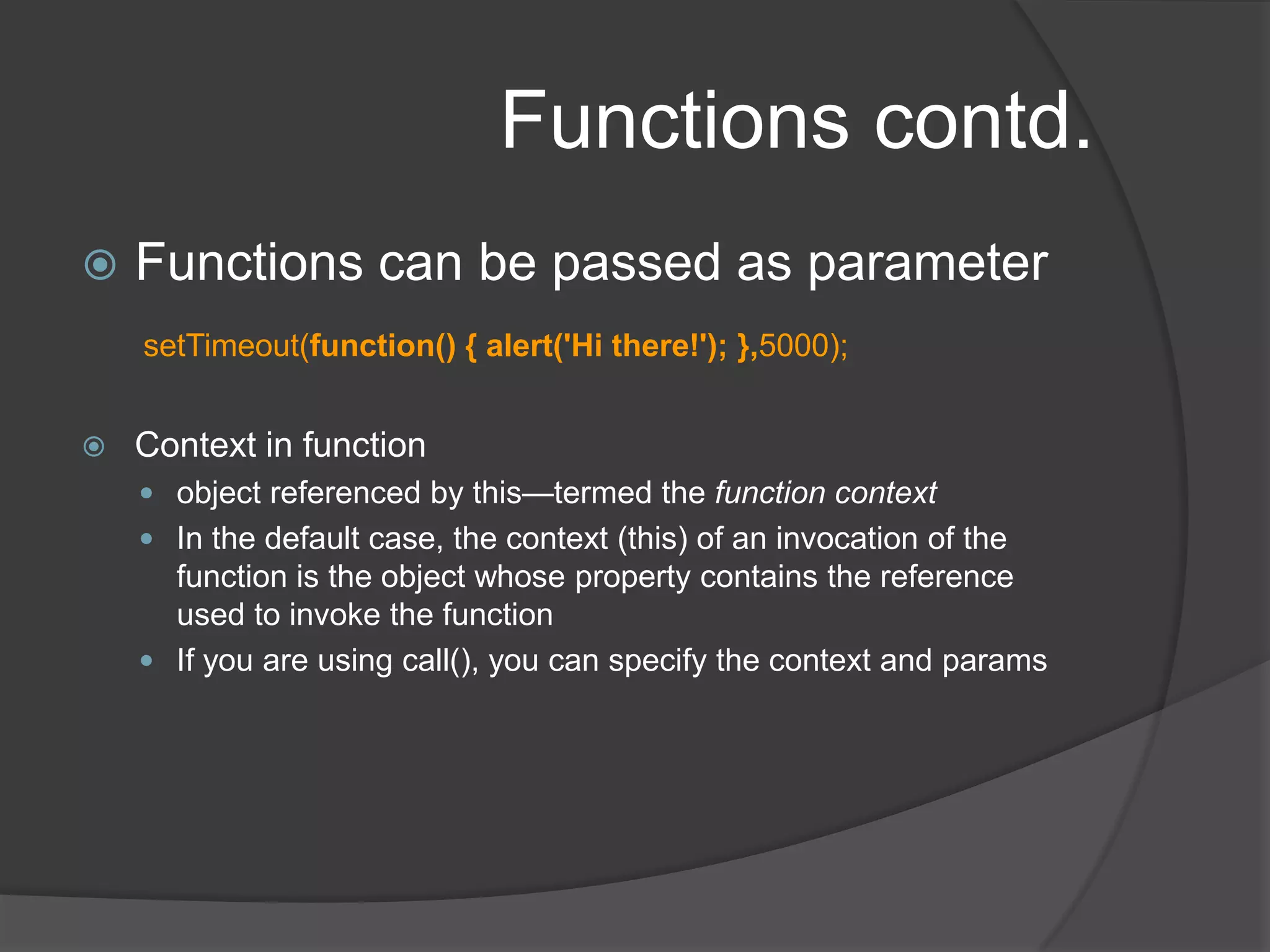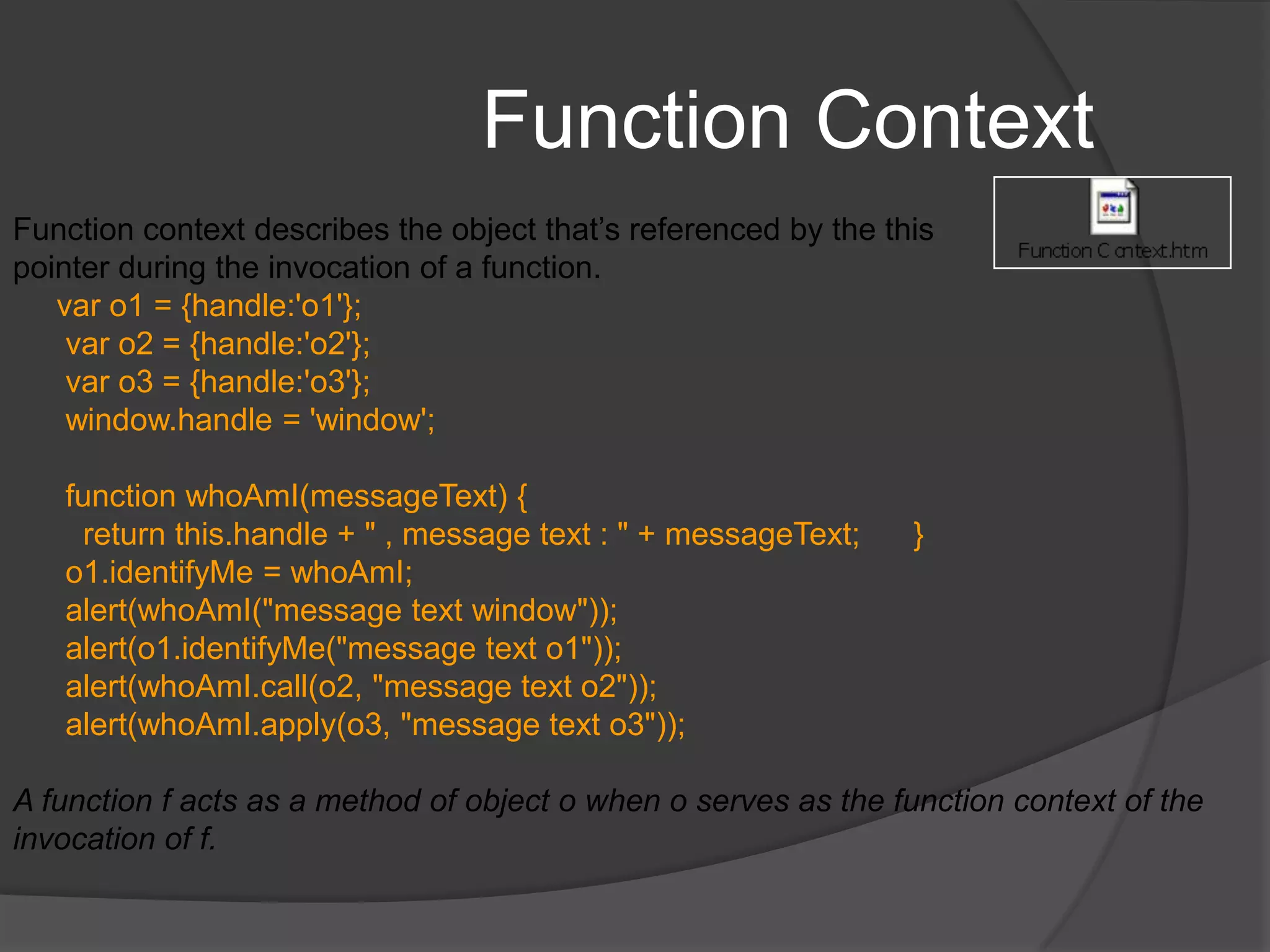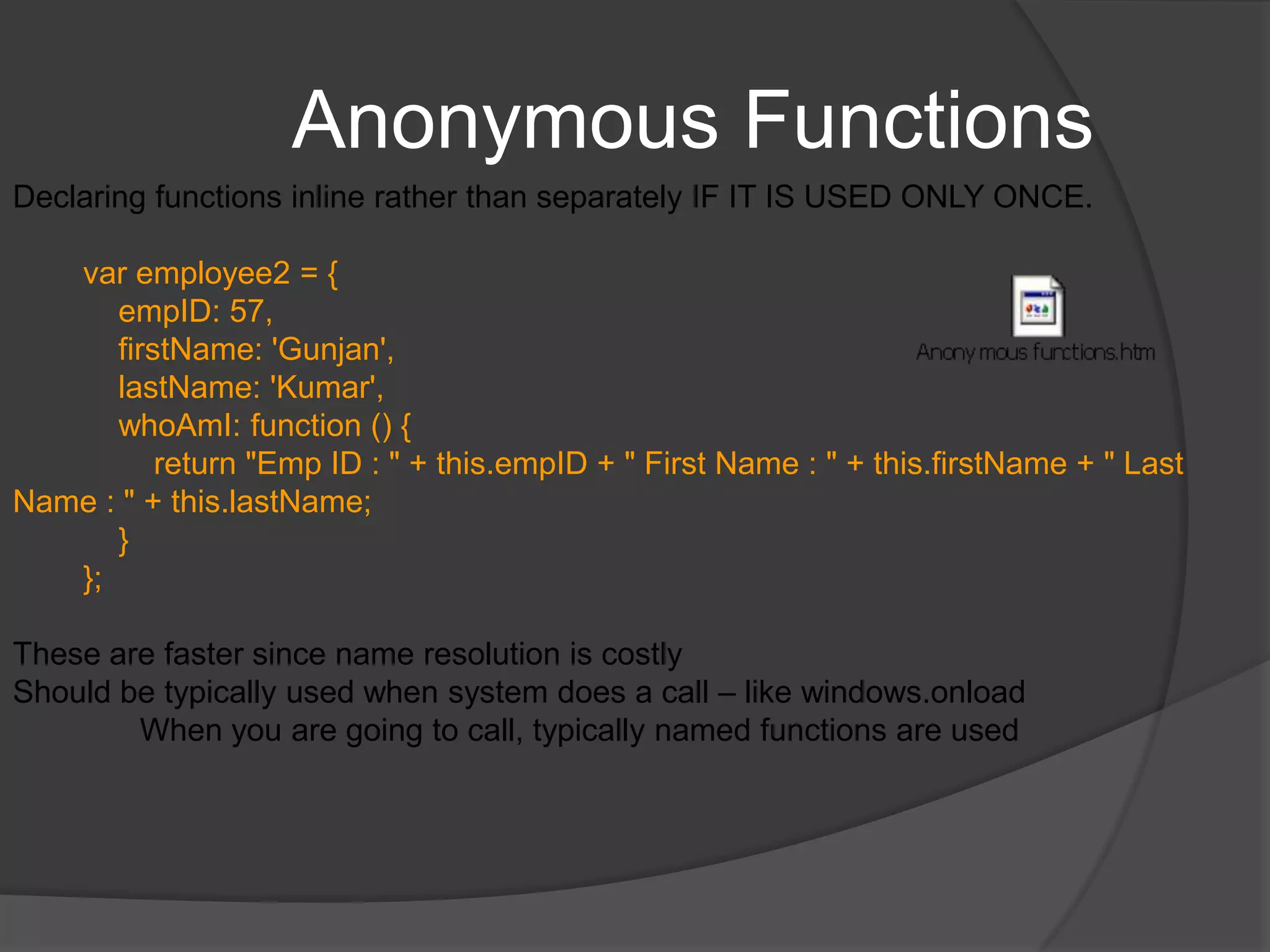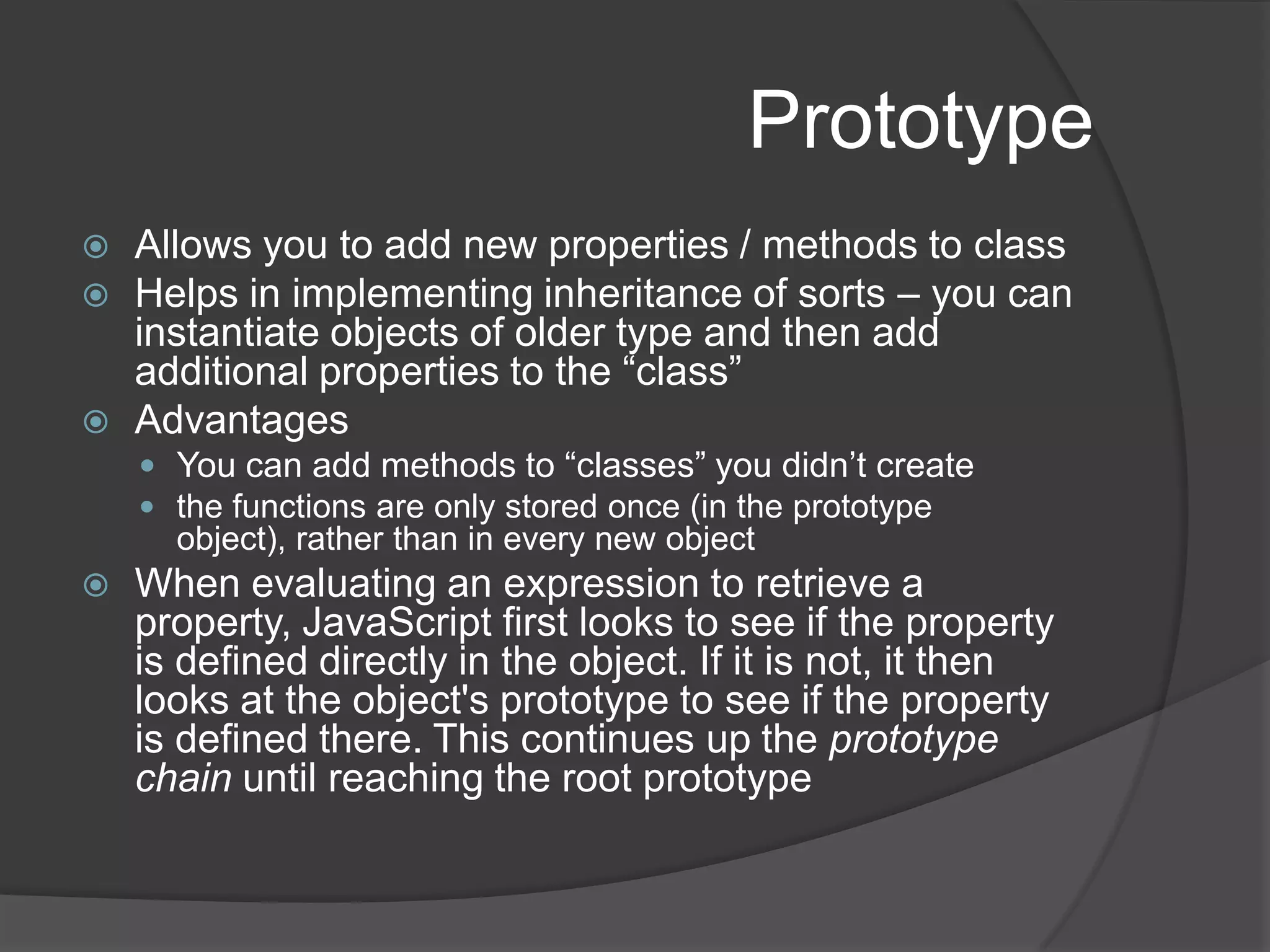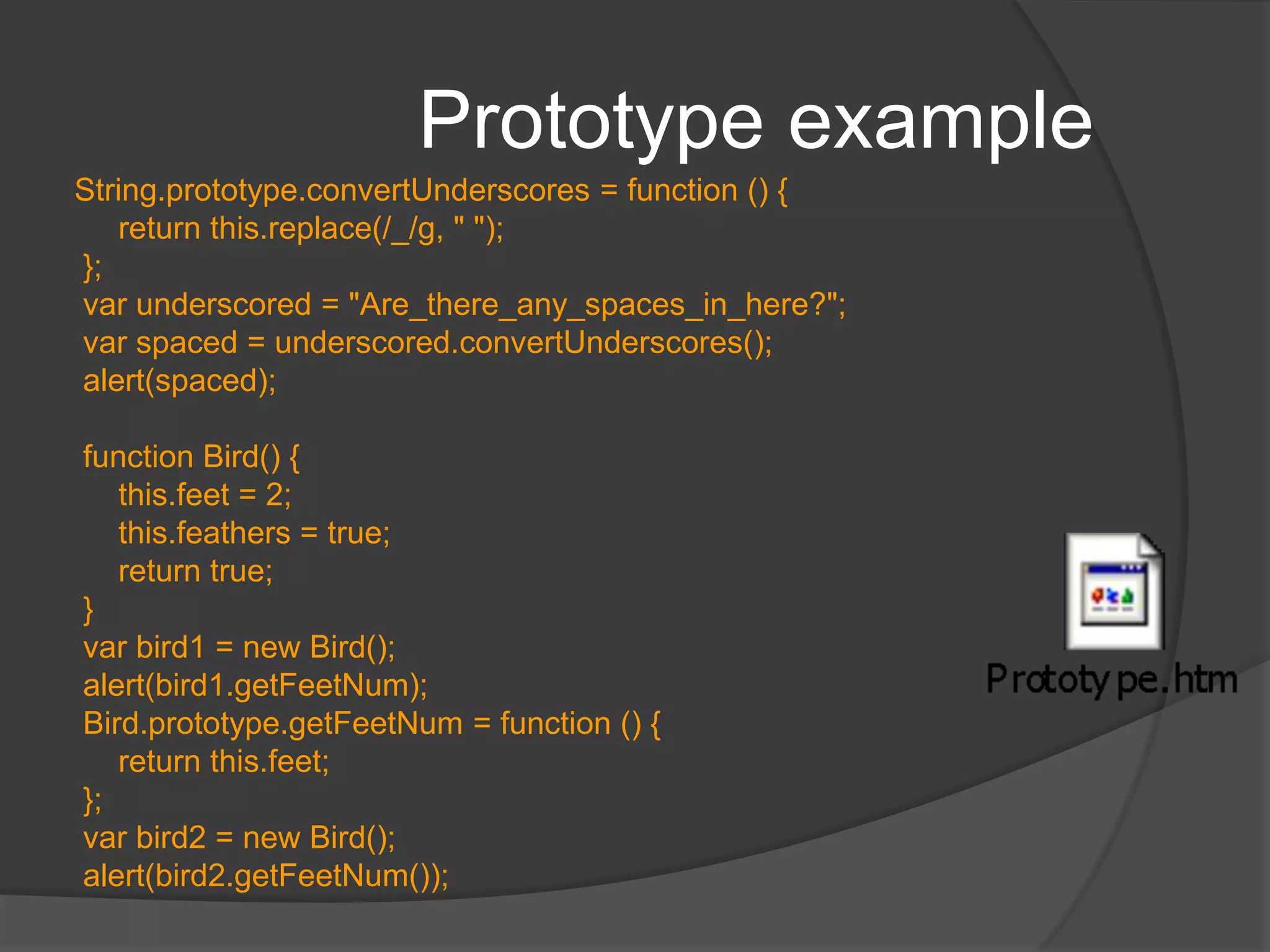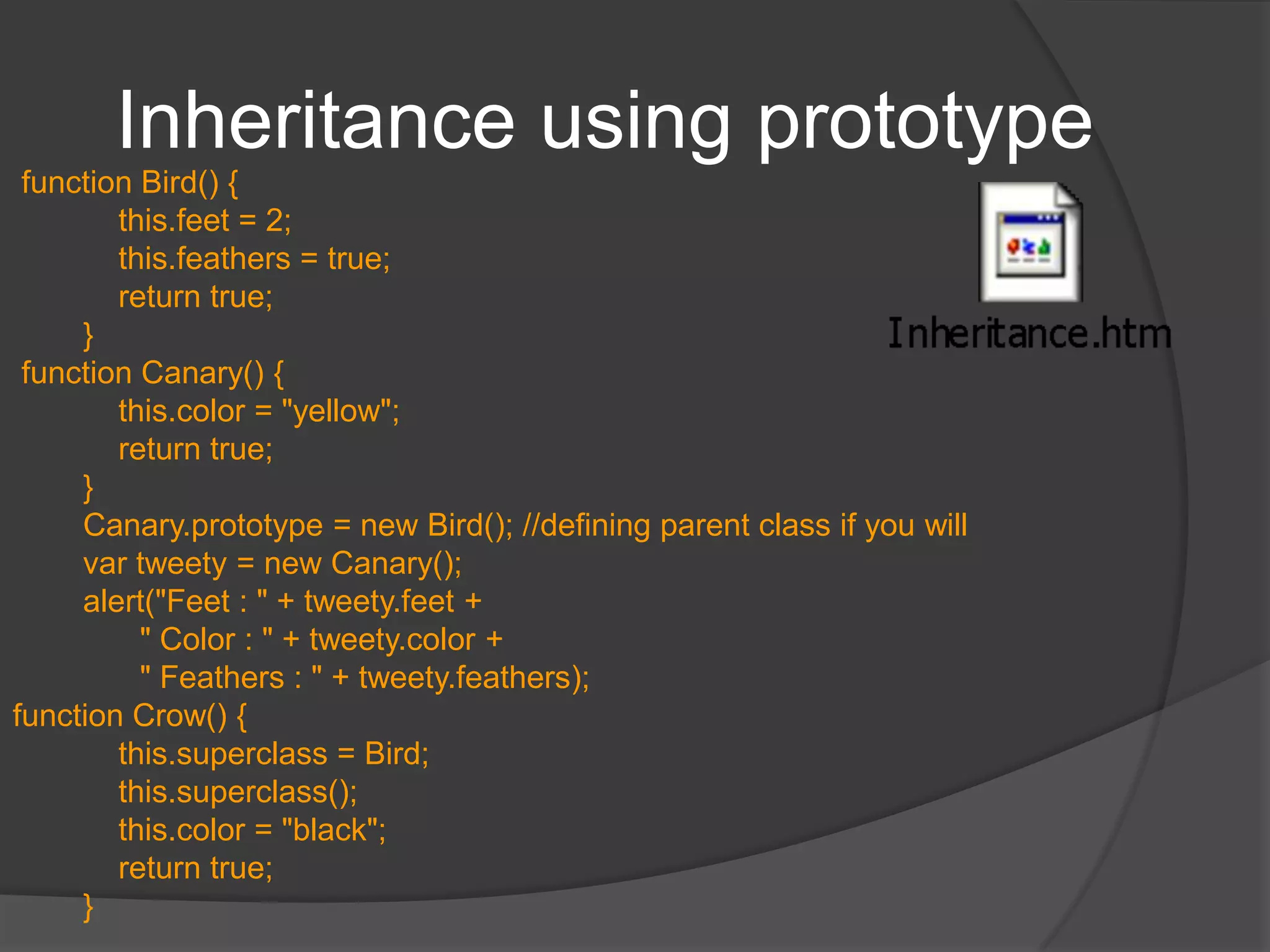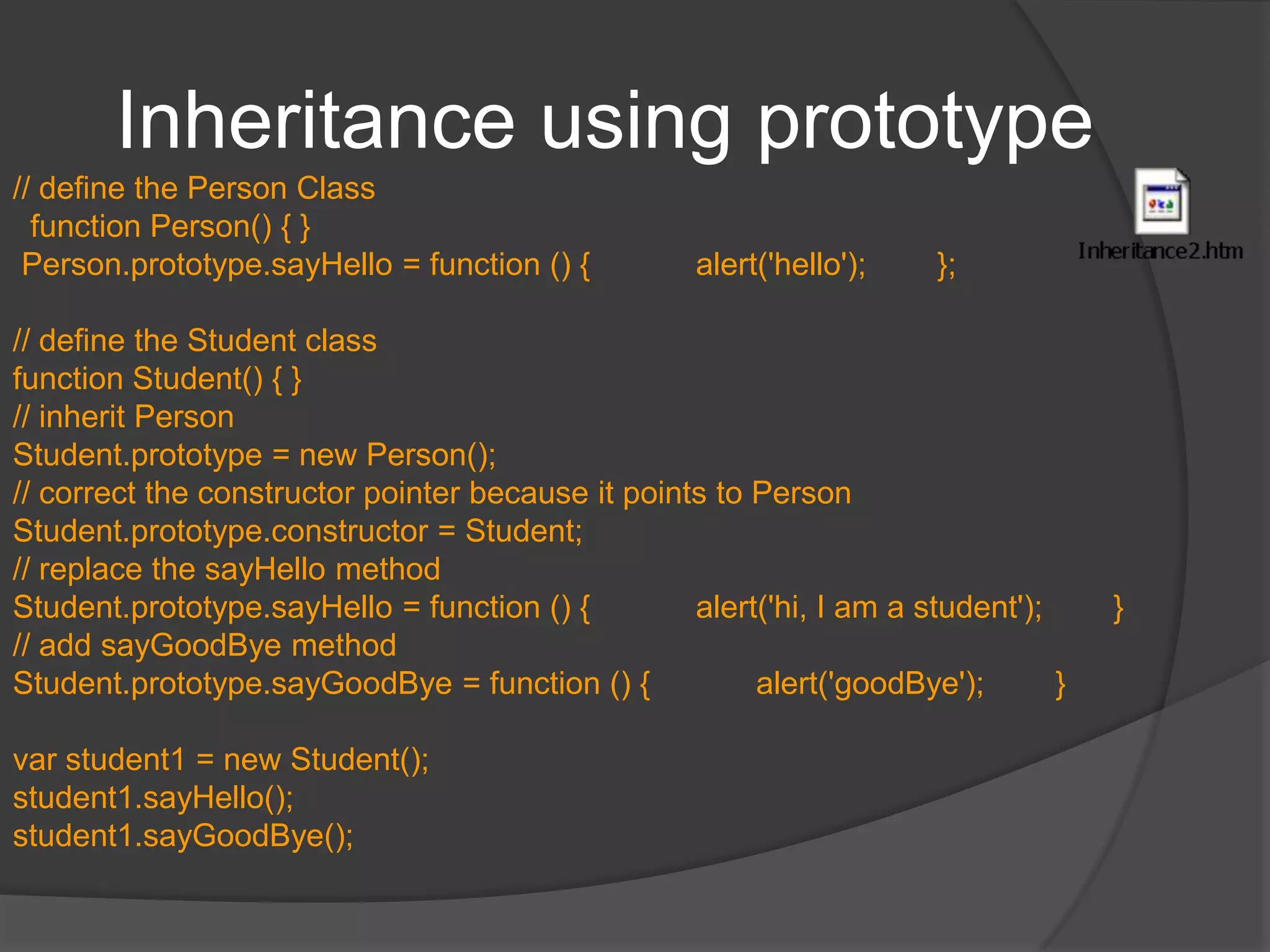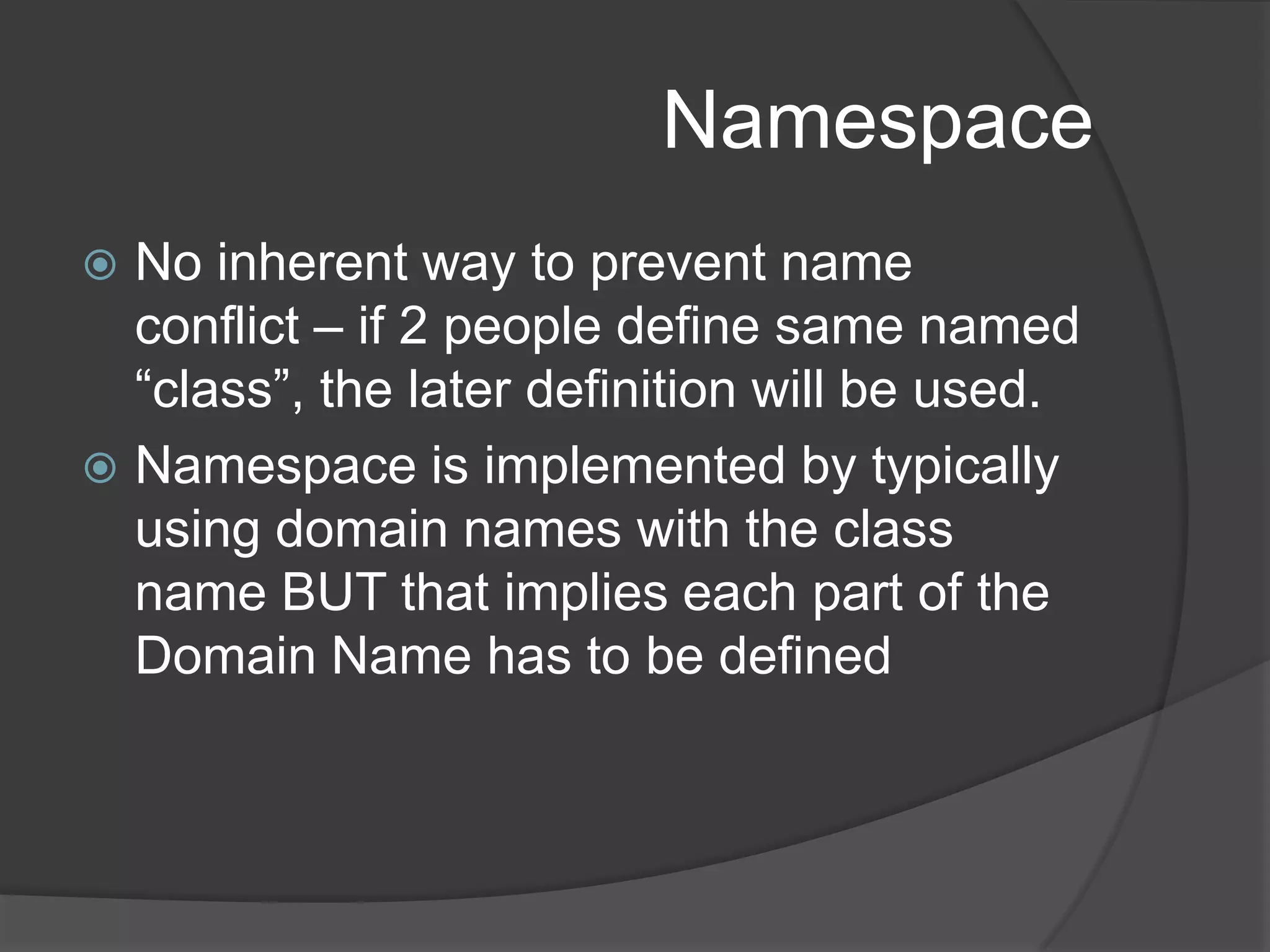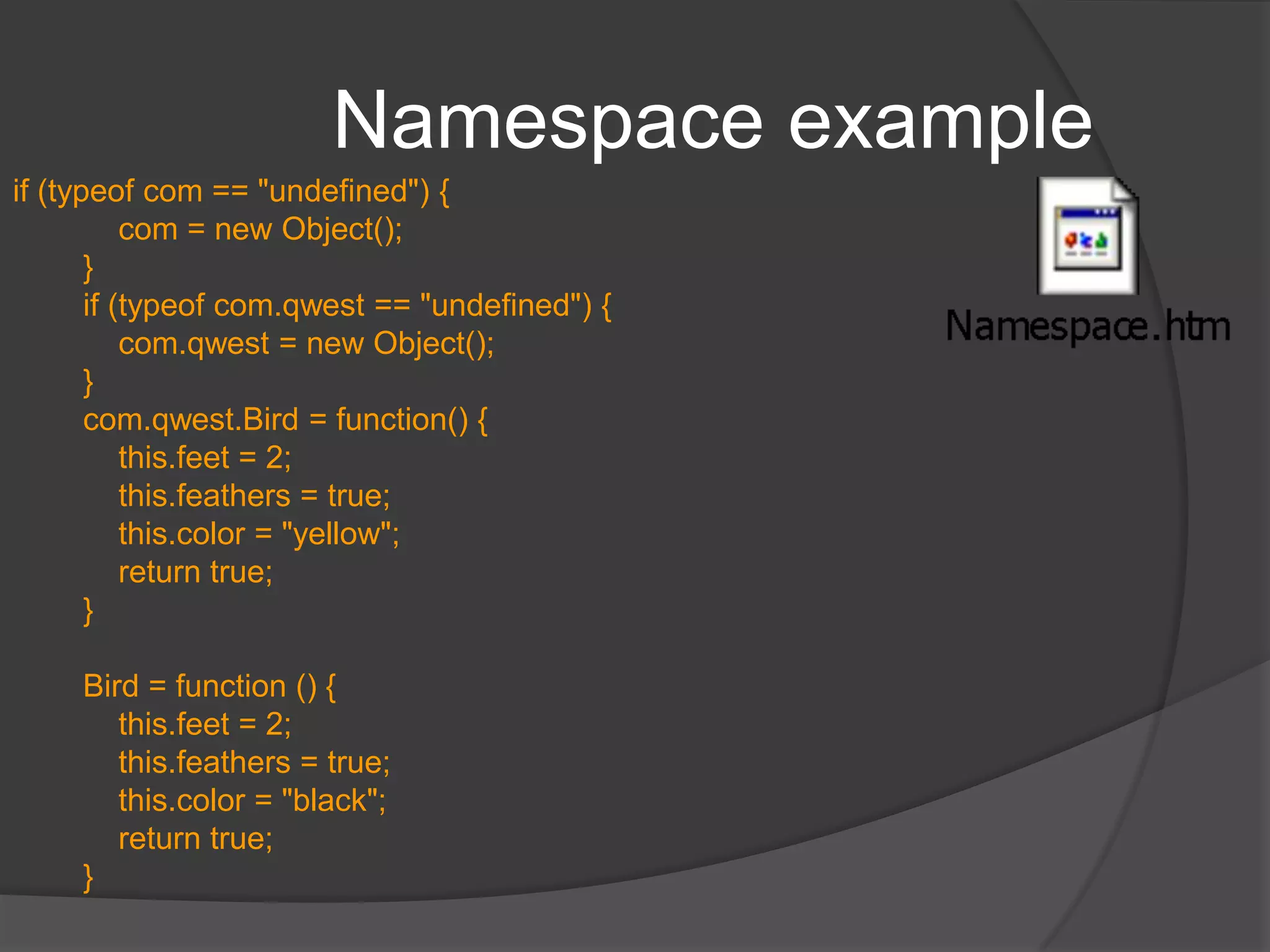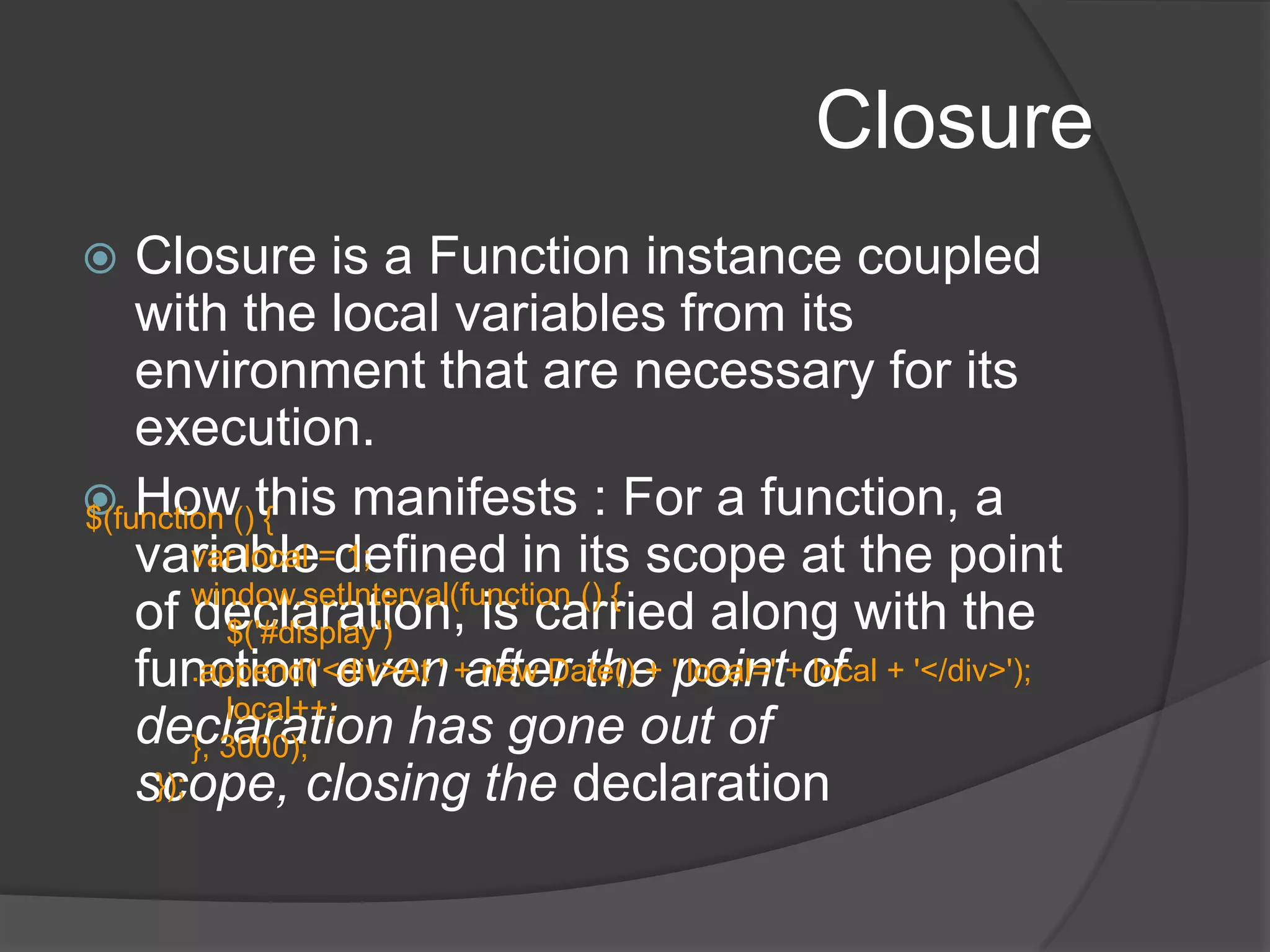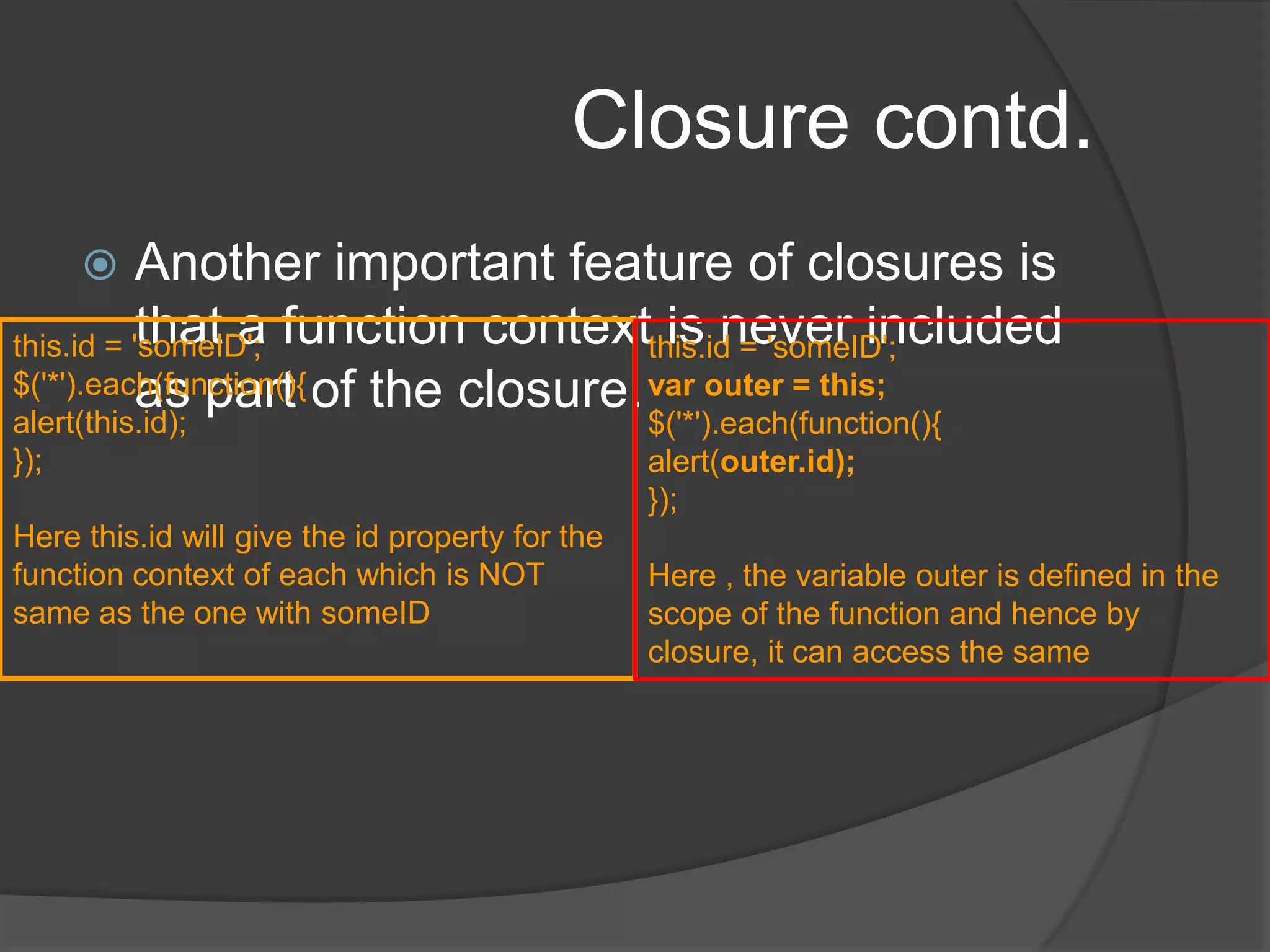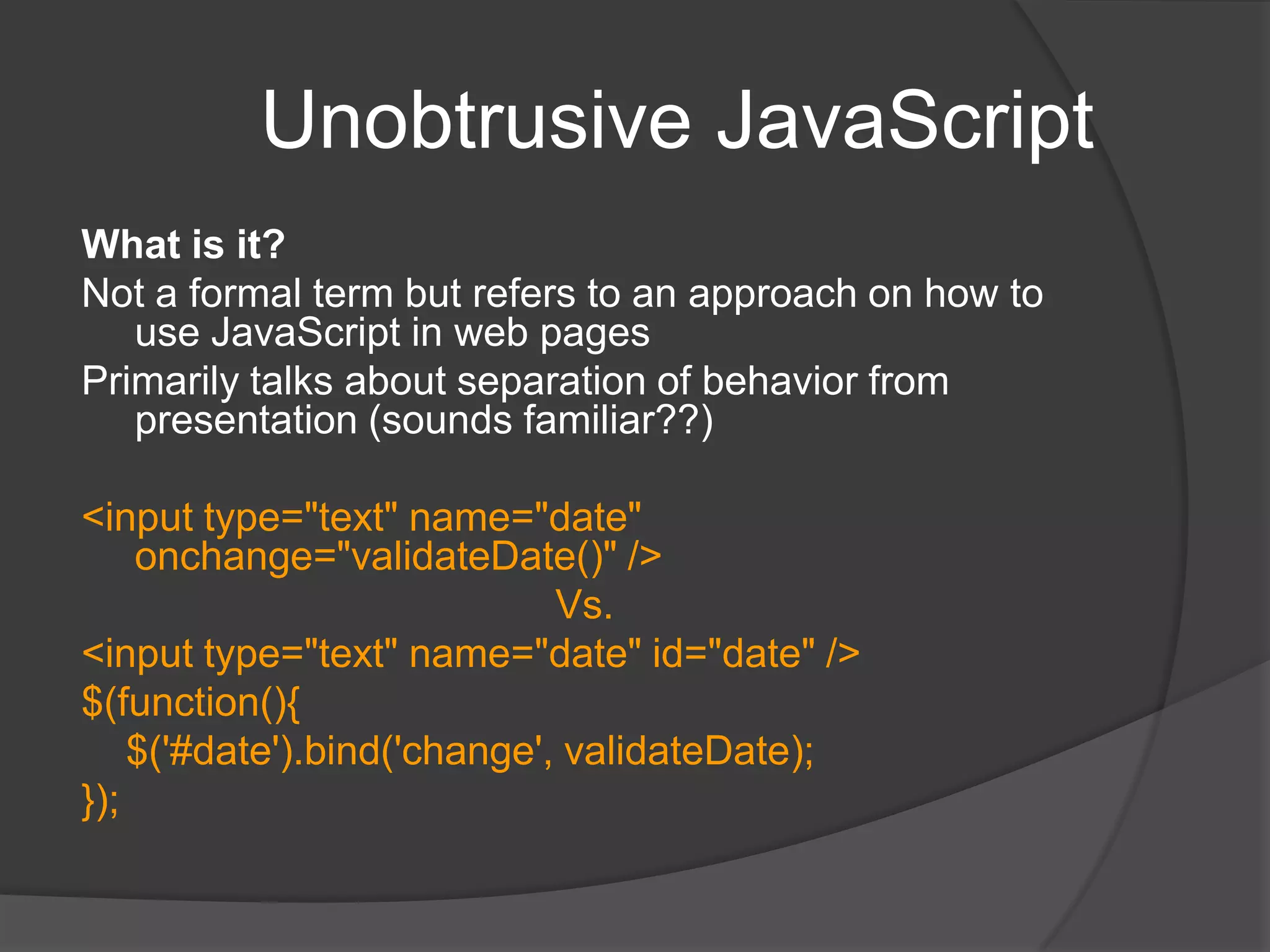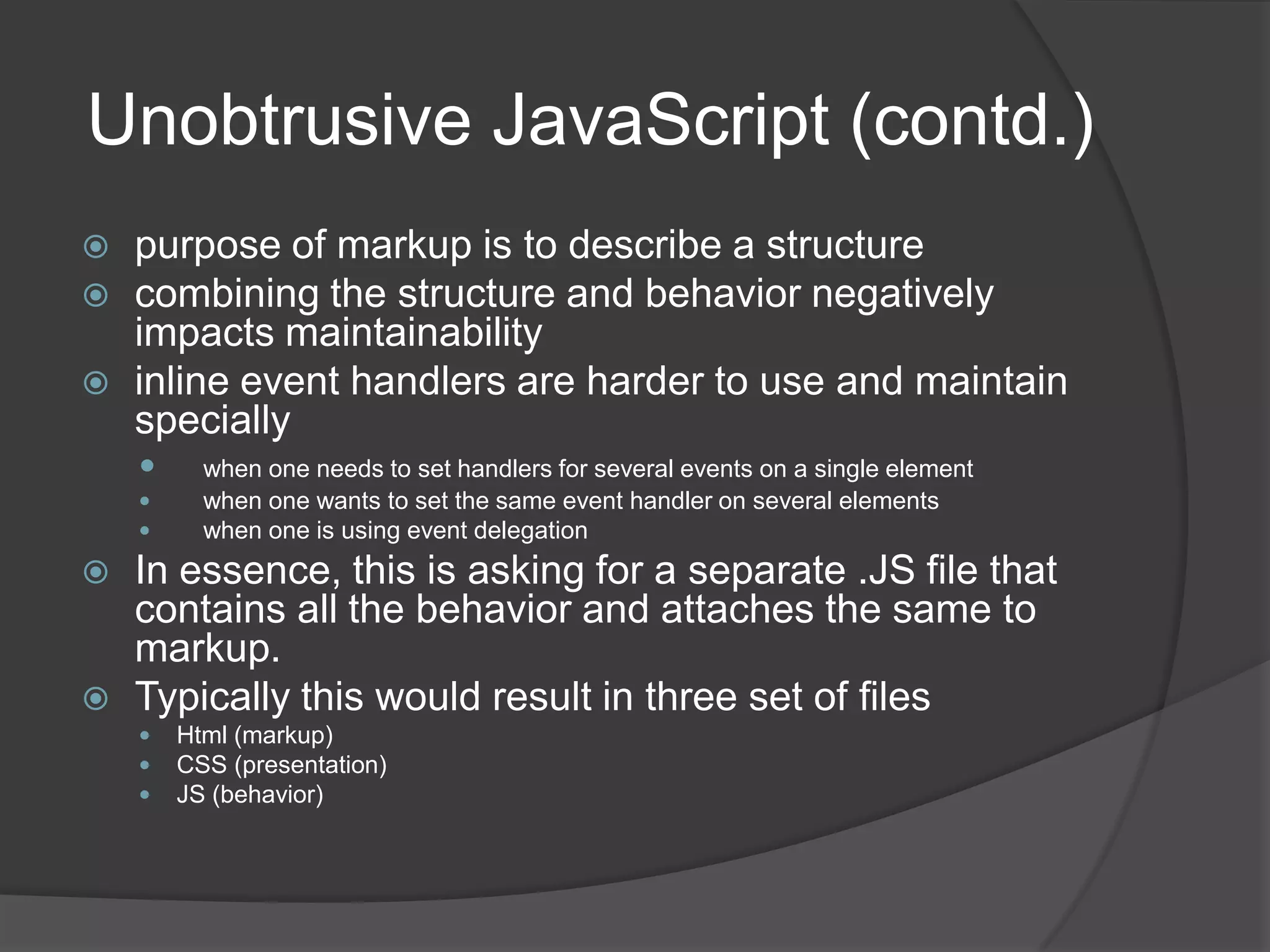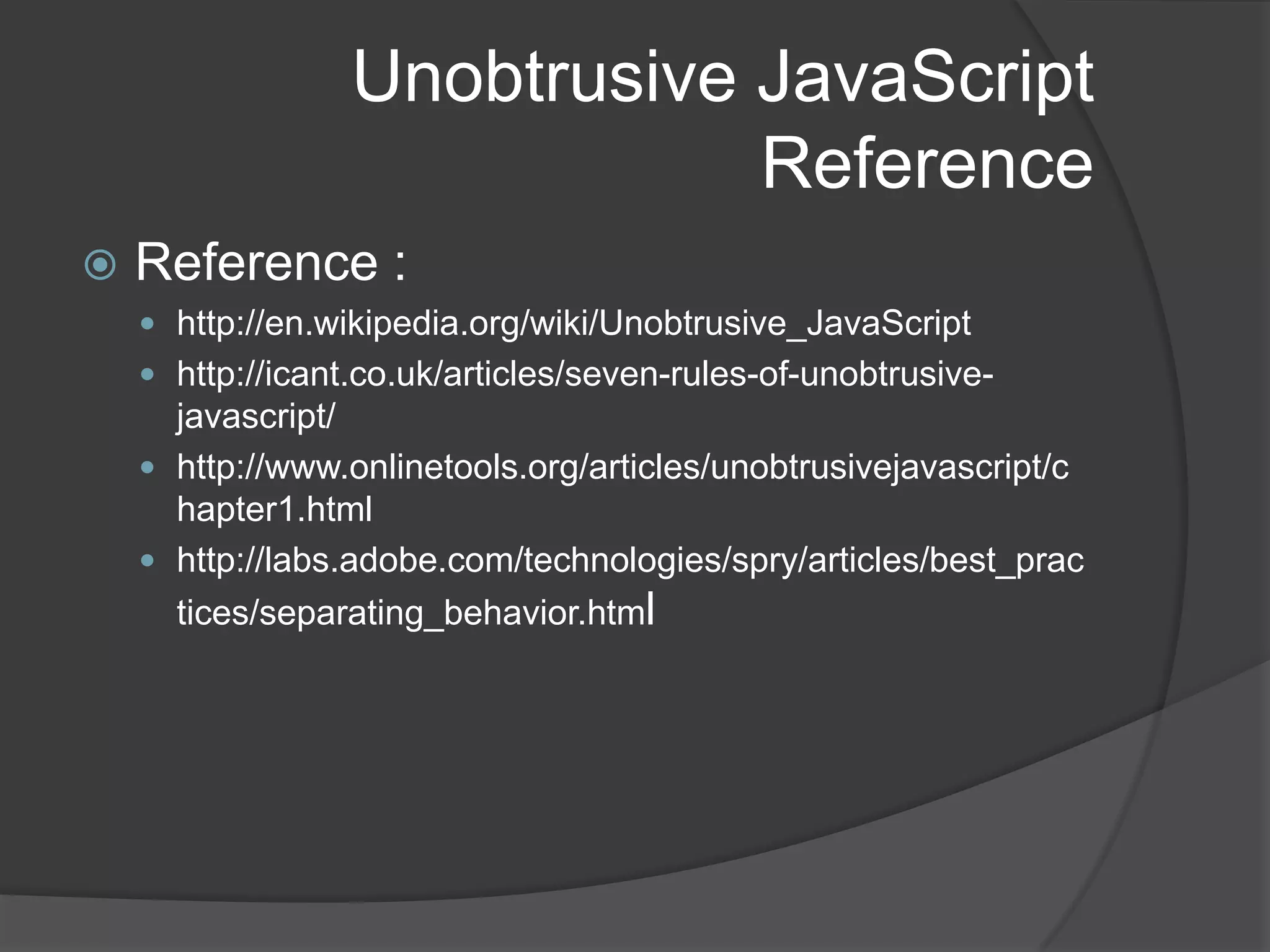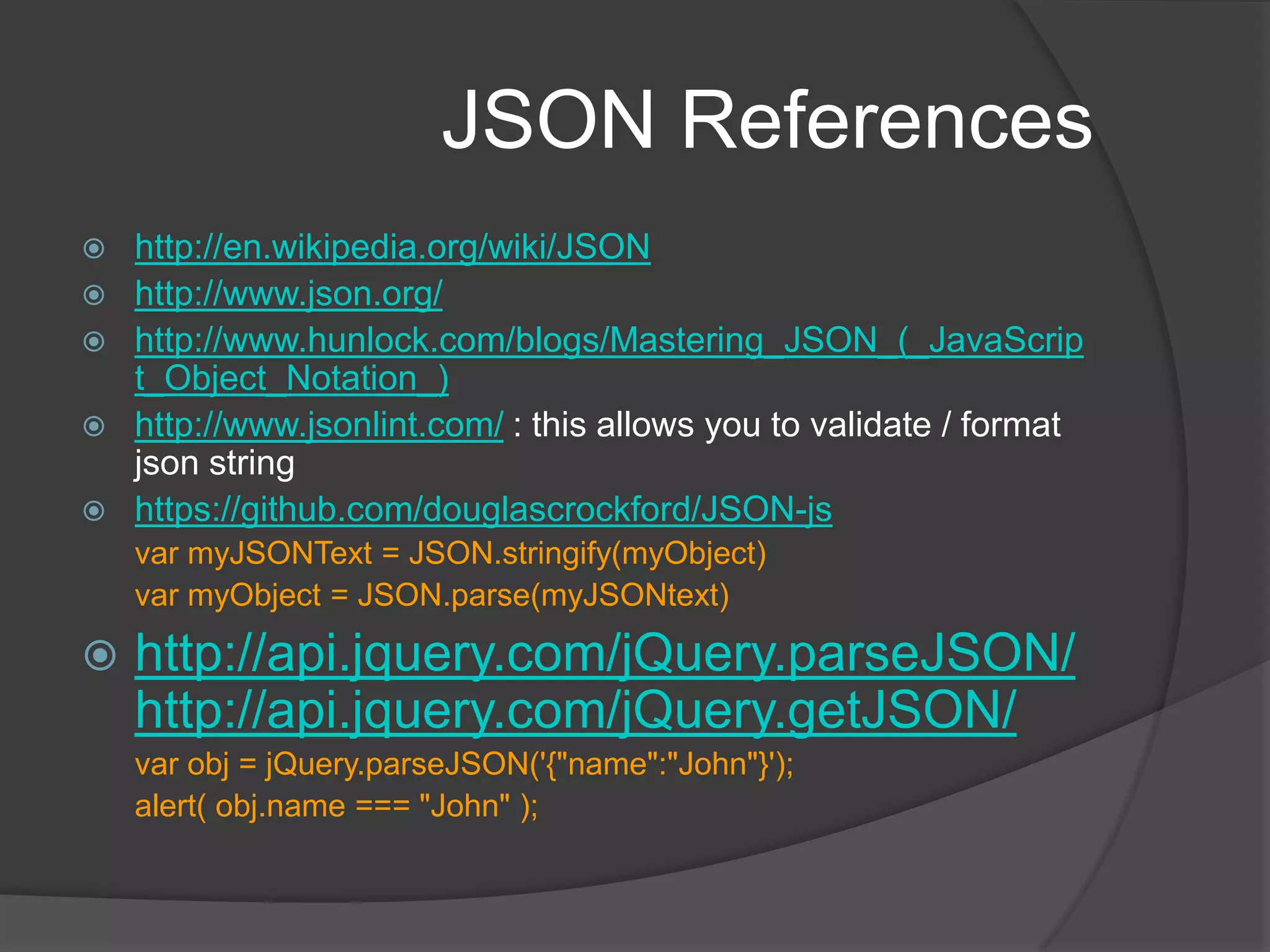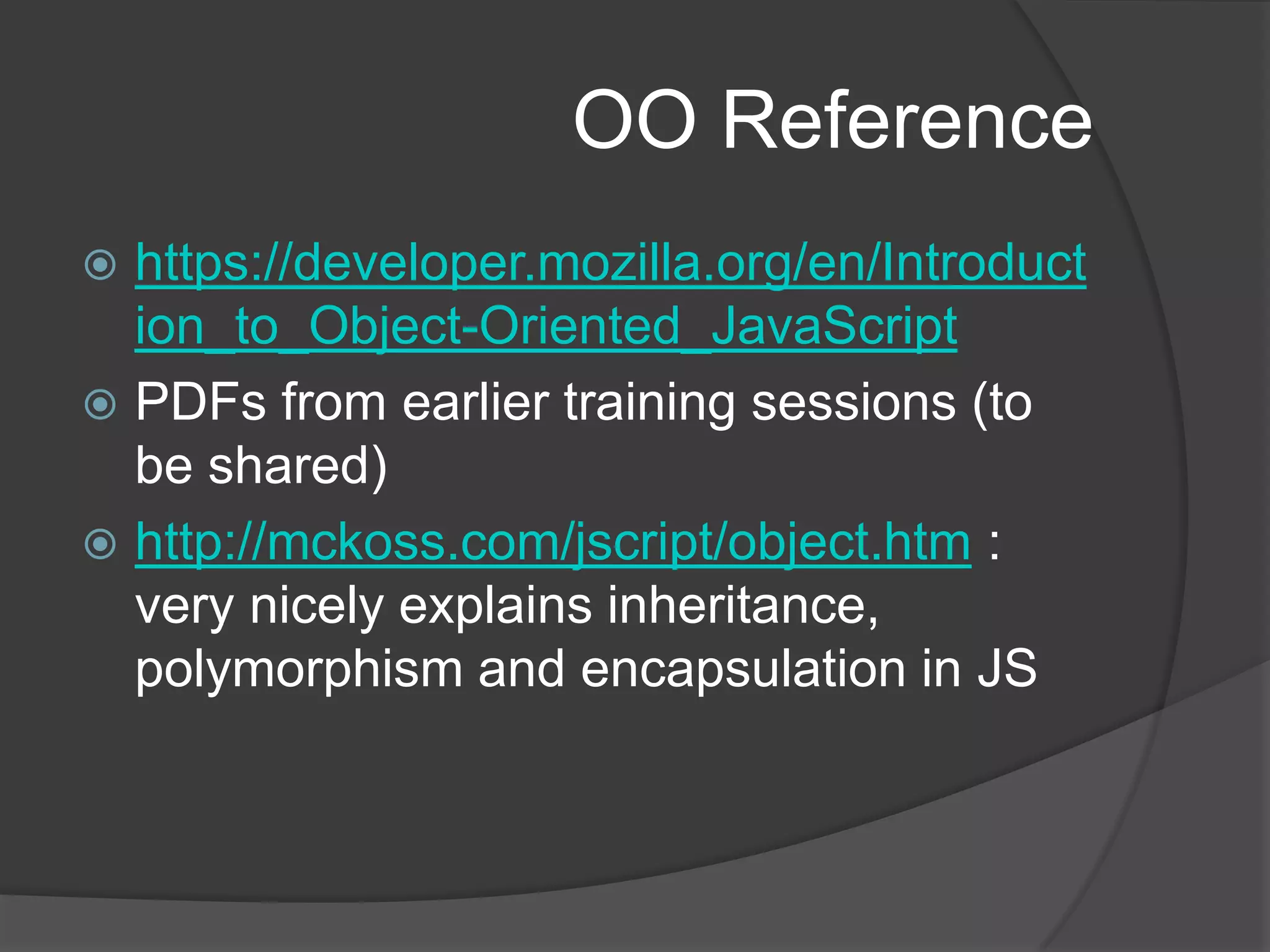The document discusses object-oriented programming concepts in JavaScript. It explains that JavaScript uses prototype-based programming rather than classes. Behavior reuse is accomplished by decorating existing objects that serve as prototypes. It then covers key OO concepts like inheritance, encapsulation, polymorphism, and abstraction and how they are supported in JavaScript through mechanisms like prototypes, functions, and object literals. The document provides examples of defining classes with functions, creating objects, adding methods, and implementing inheritance through the prototype chain. It also discusses namespaces, closures, and other JavaScript programming patterns.
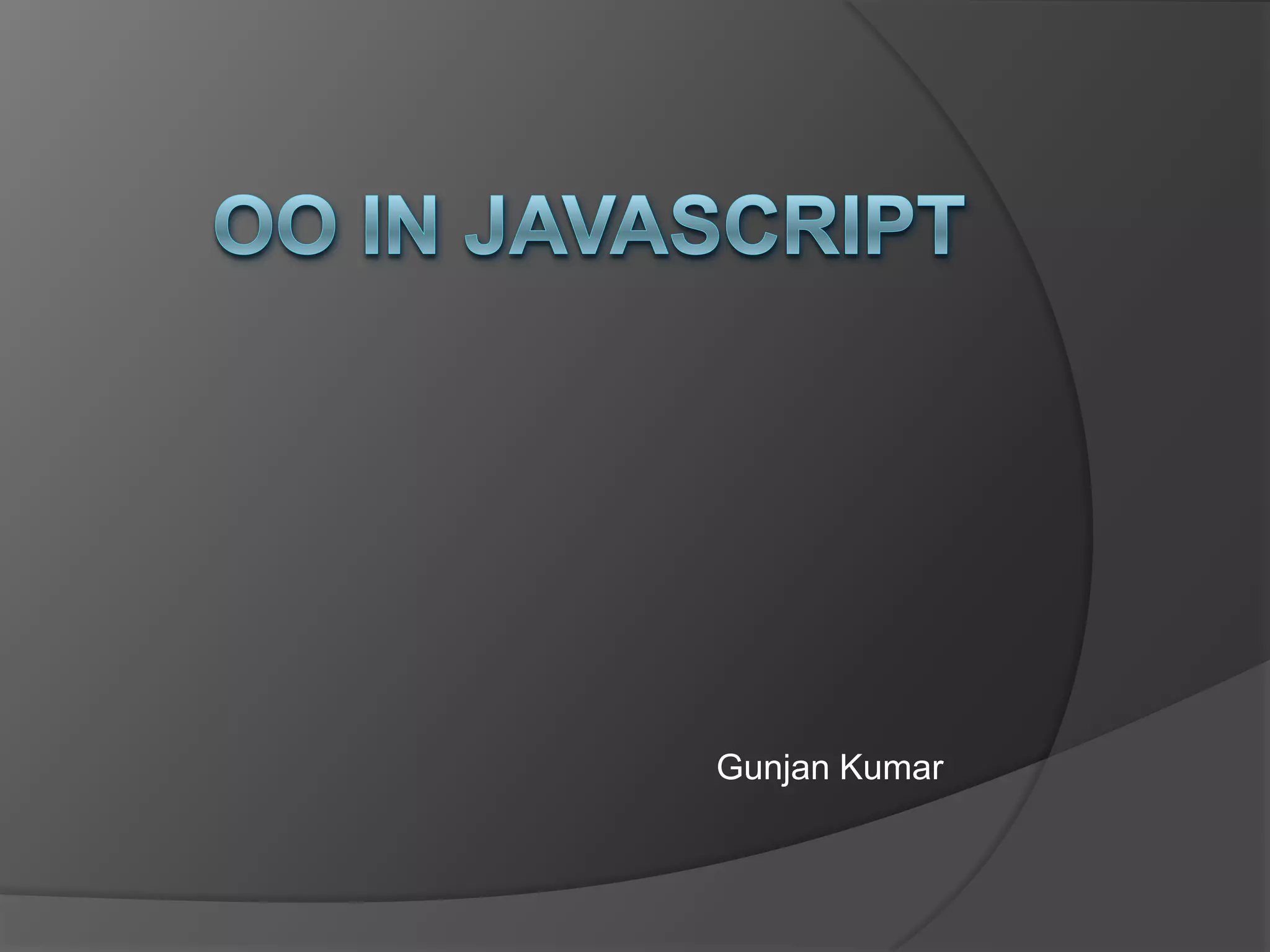
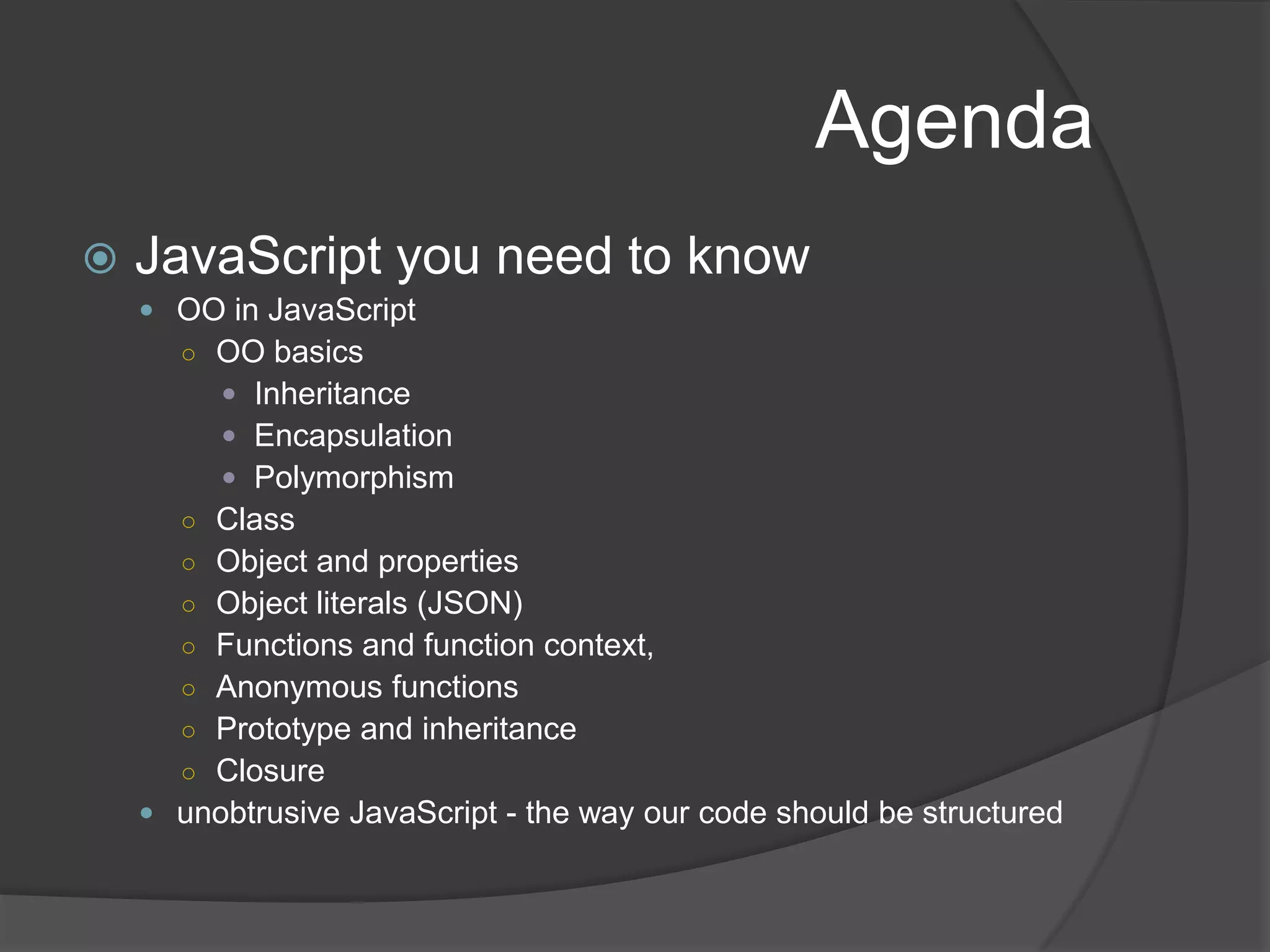
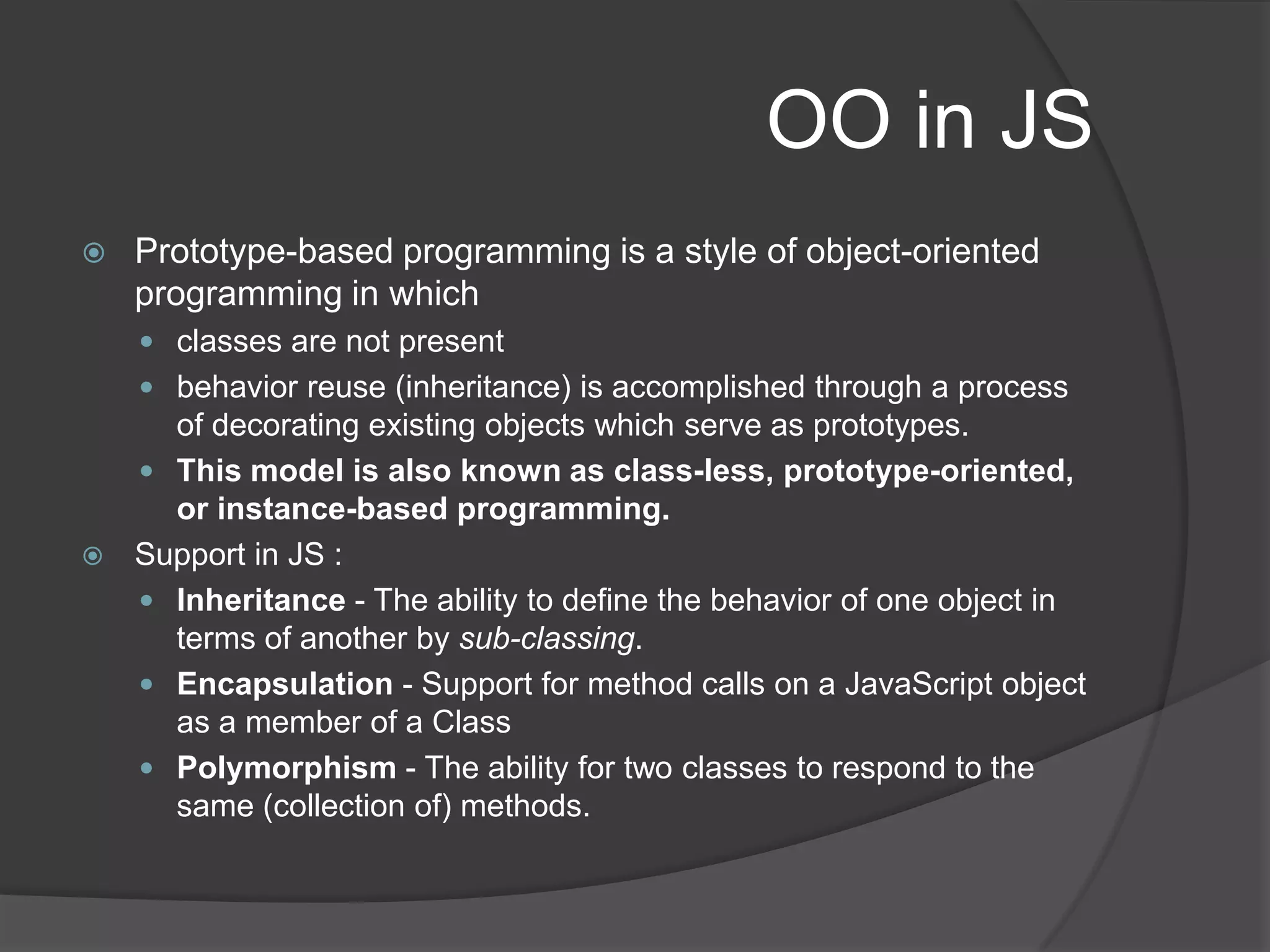
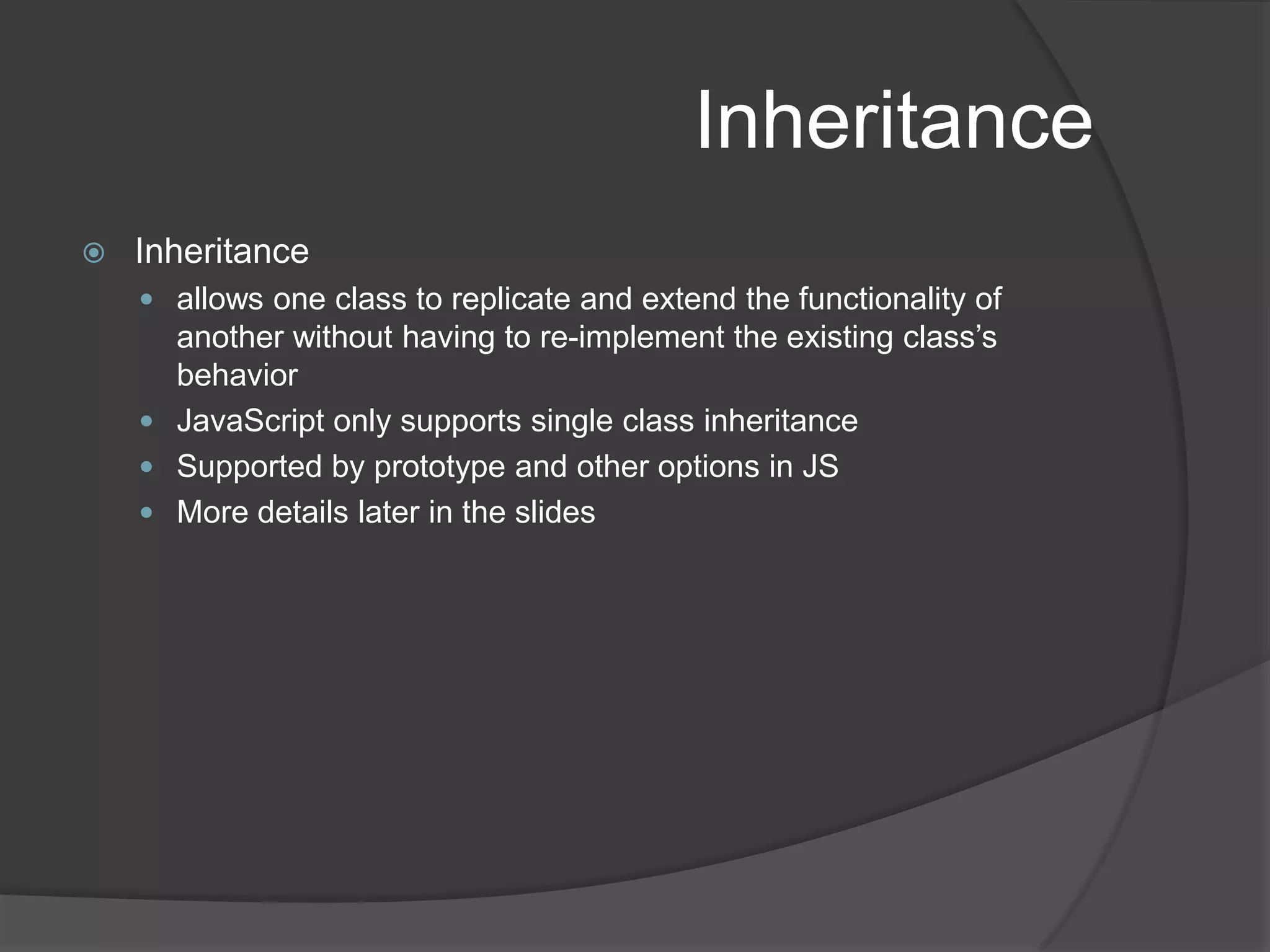
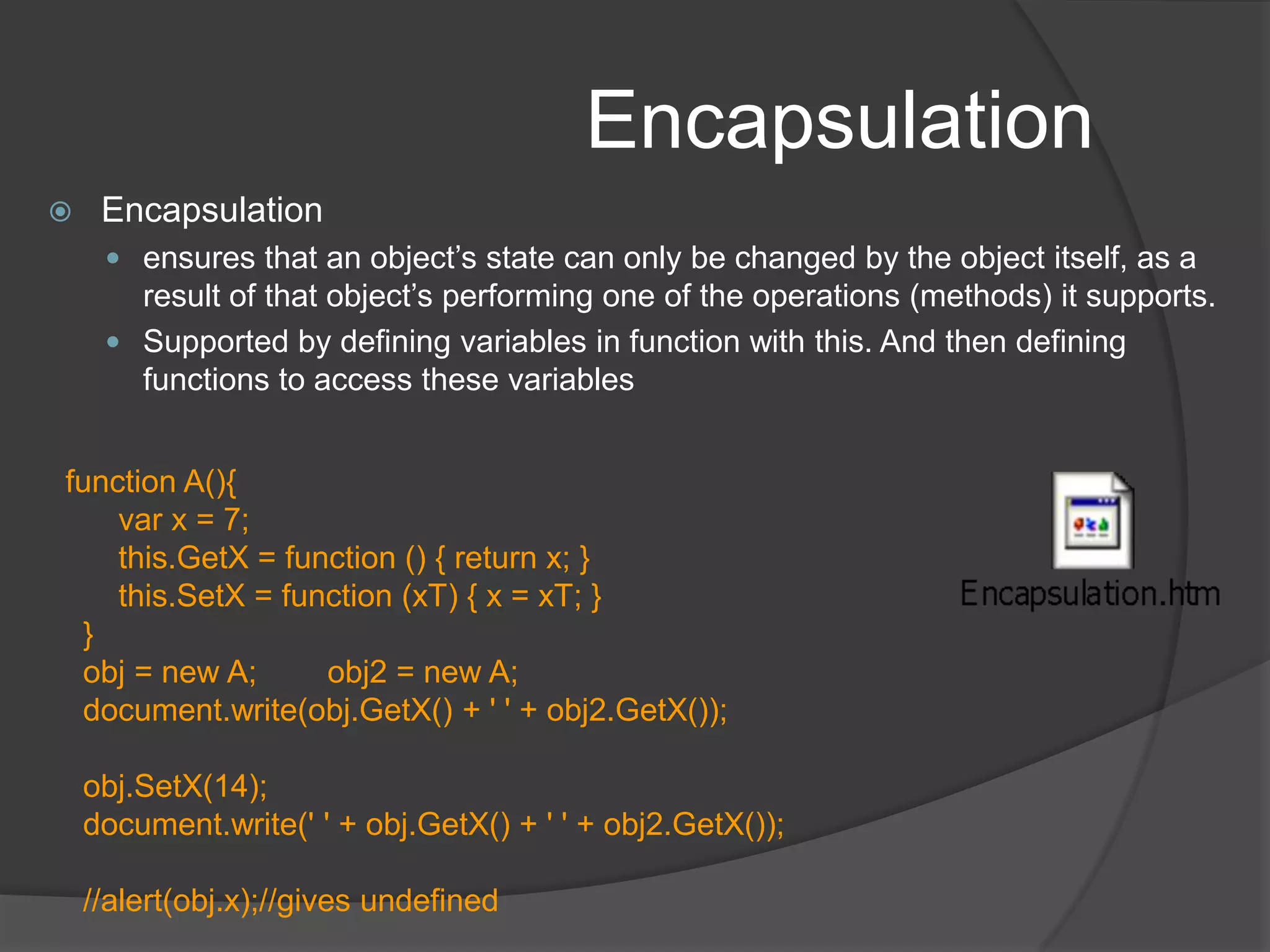
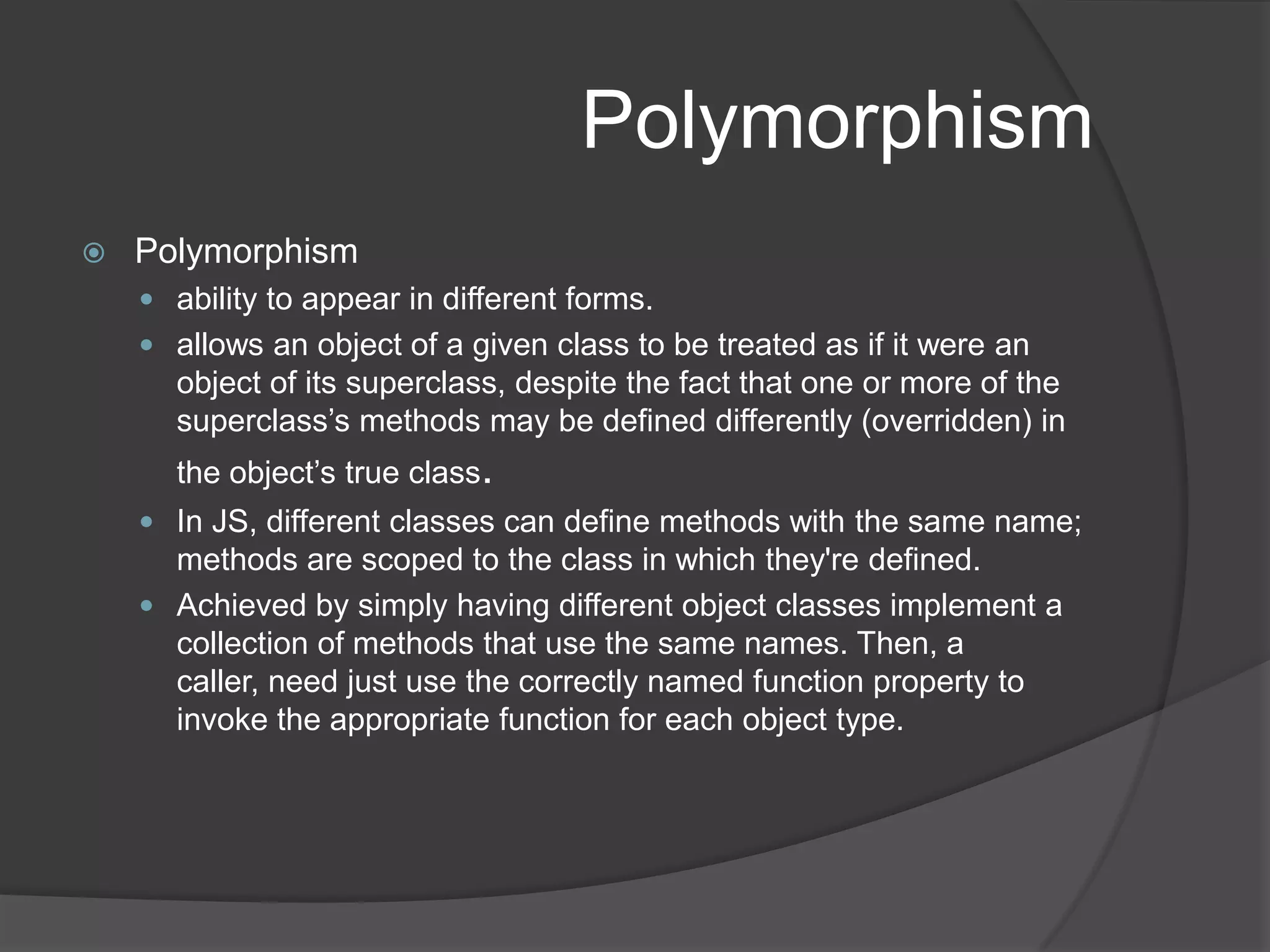
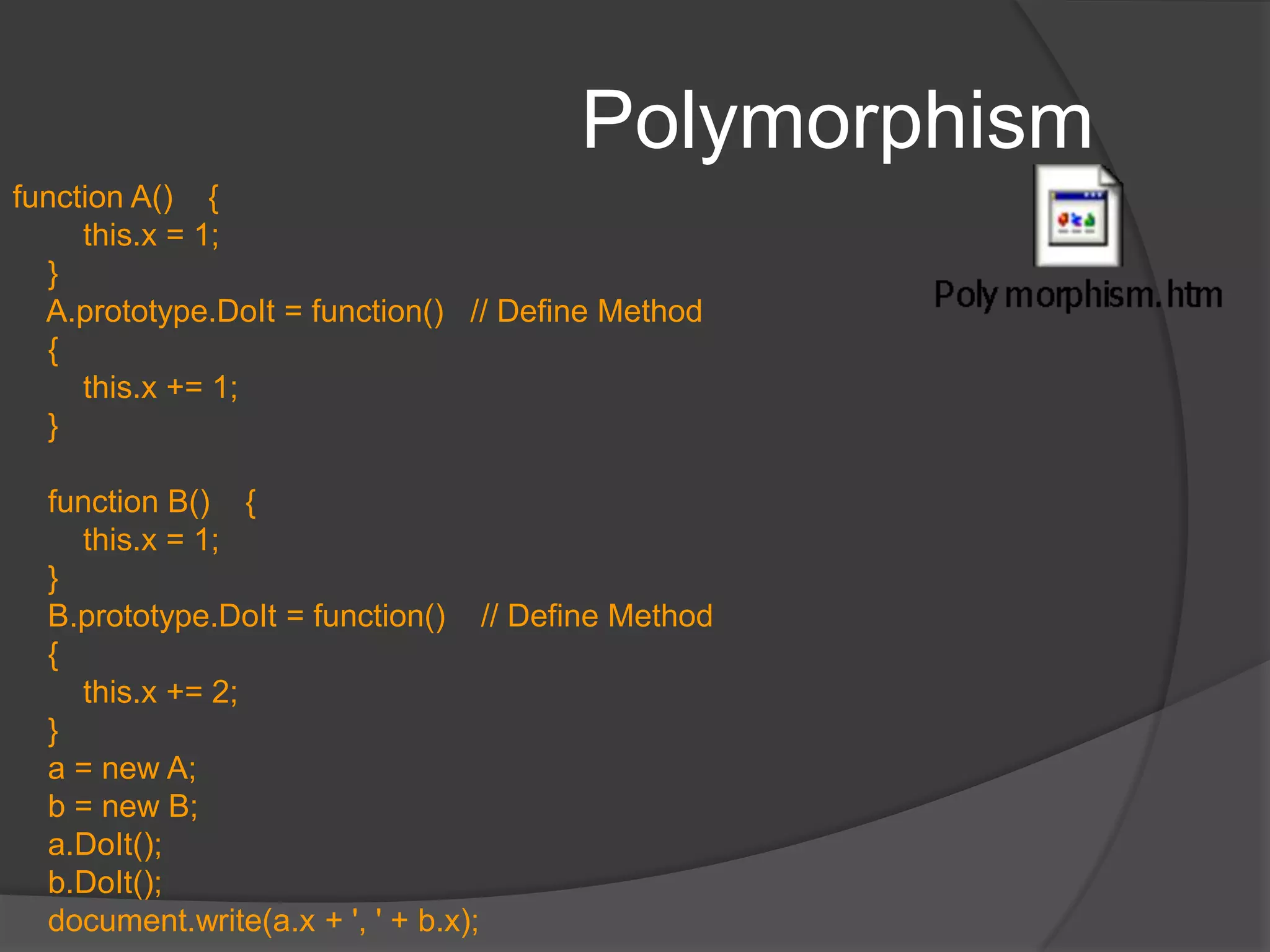
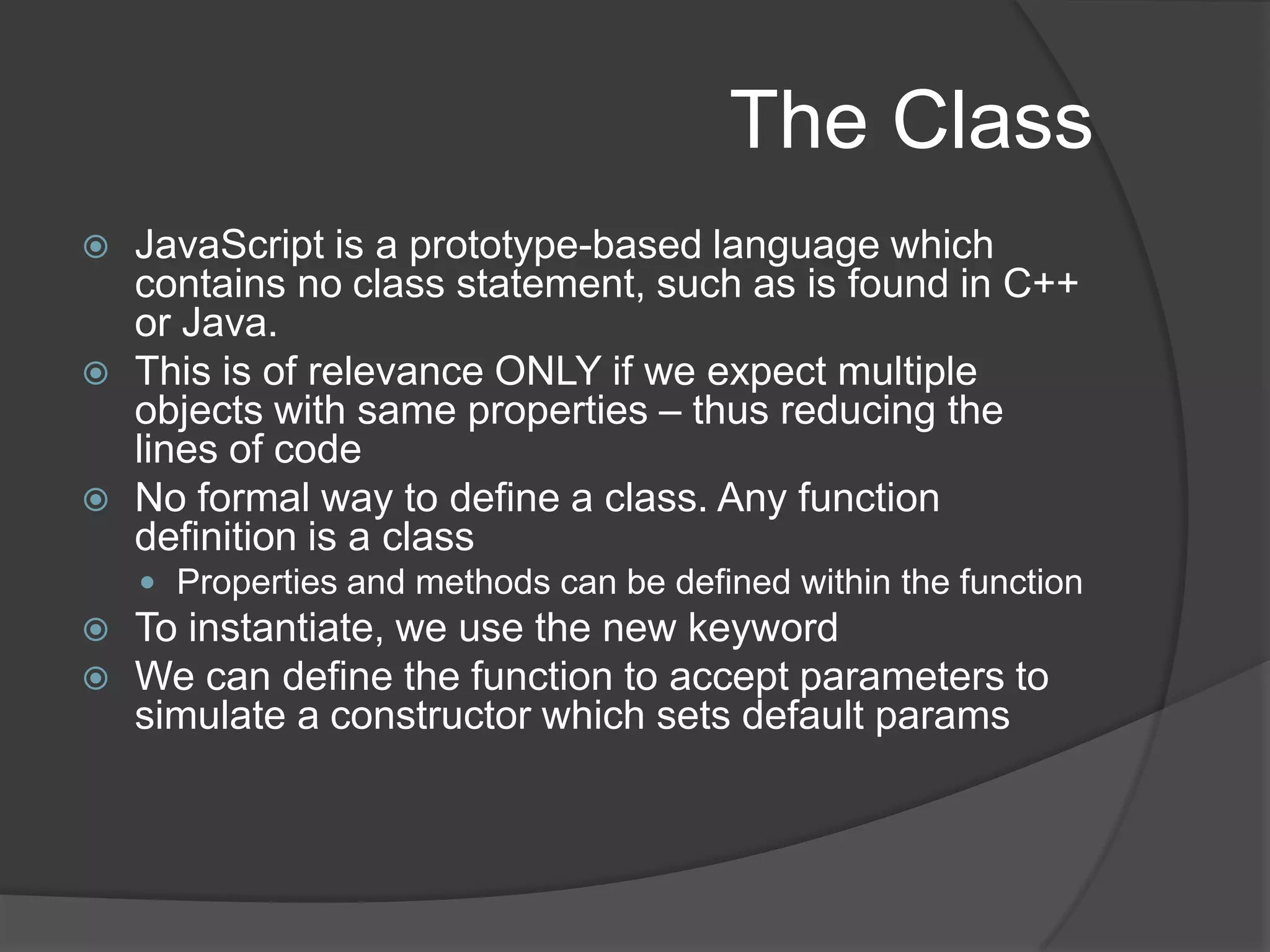
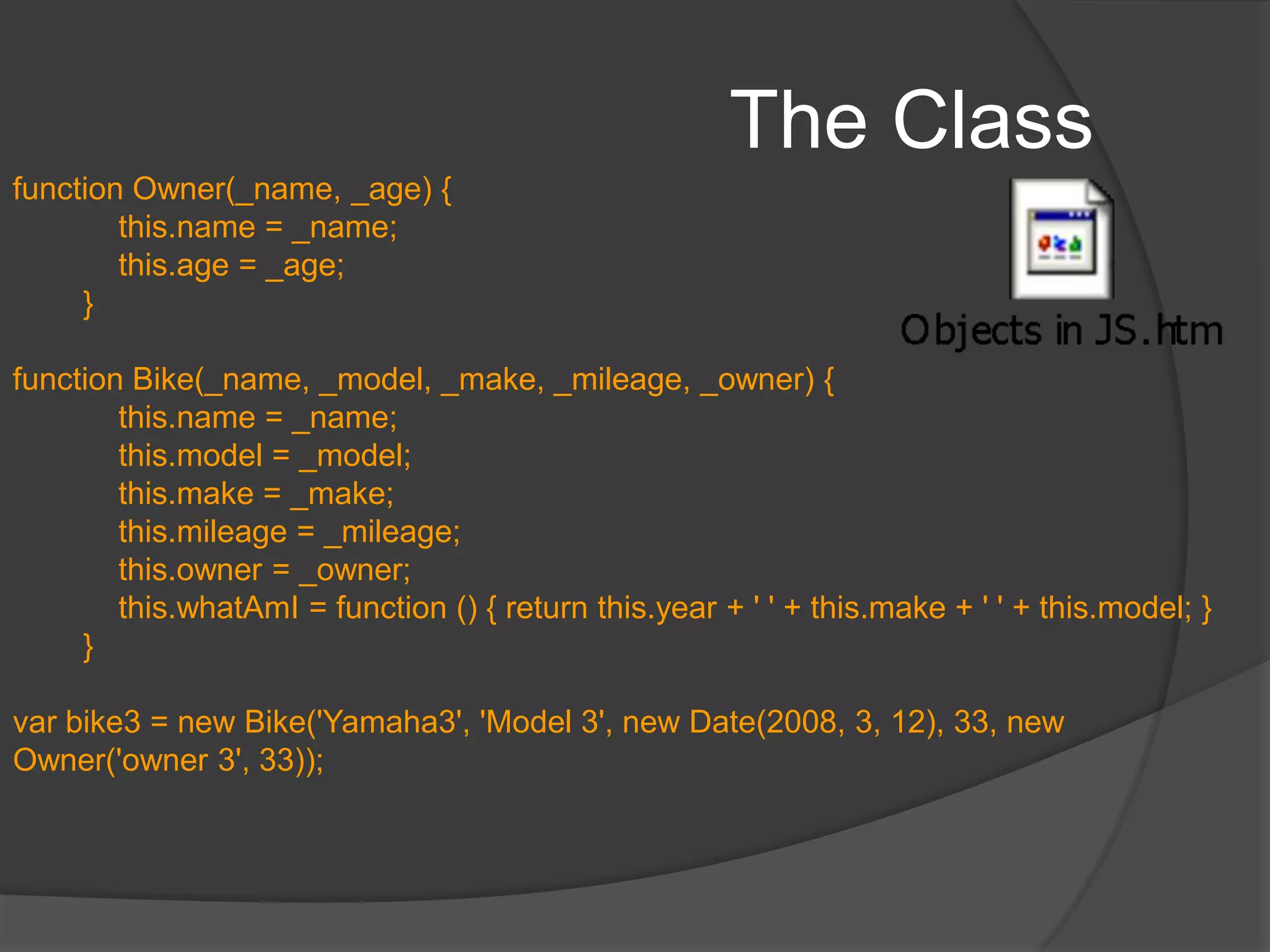
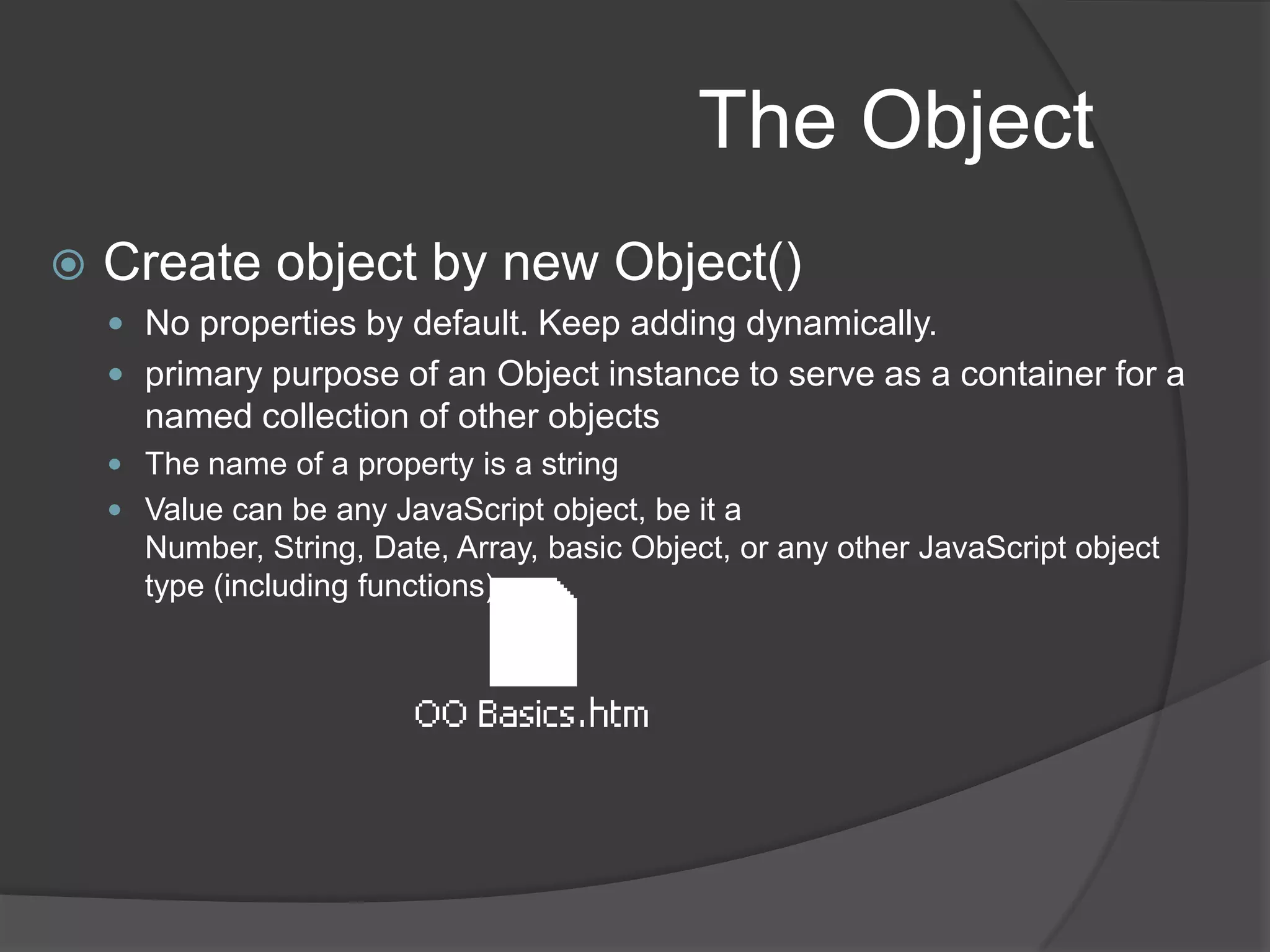
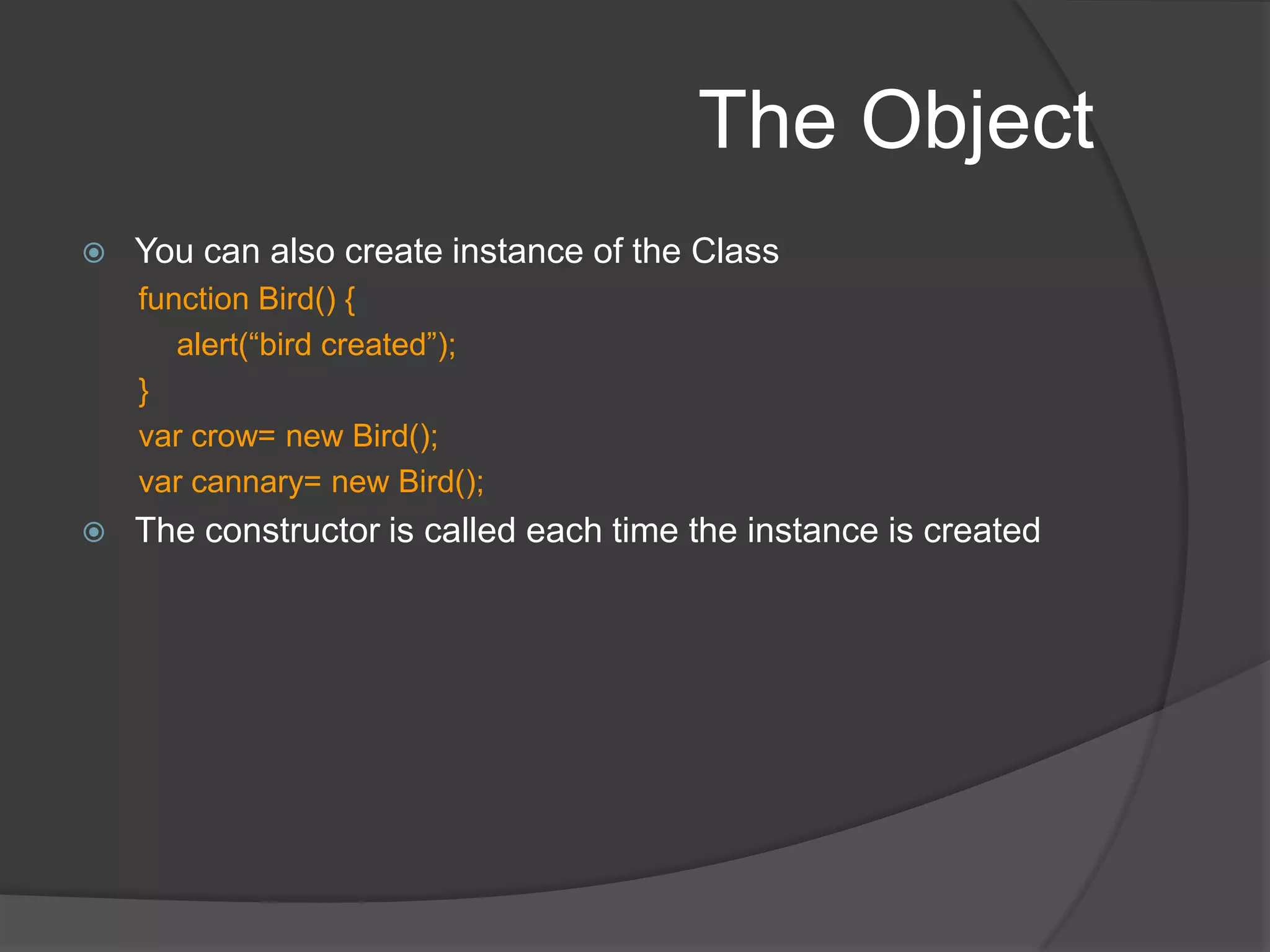
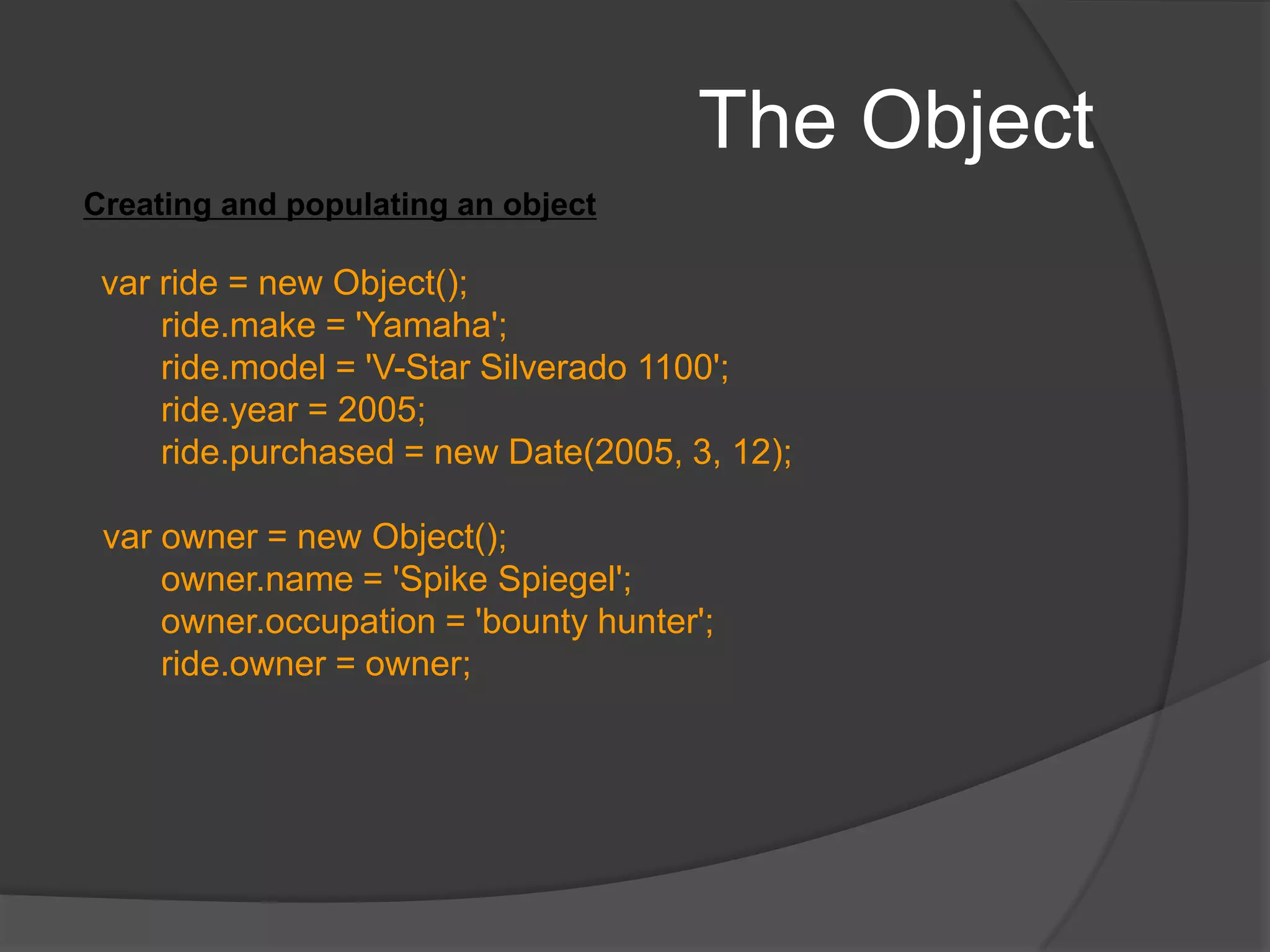
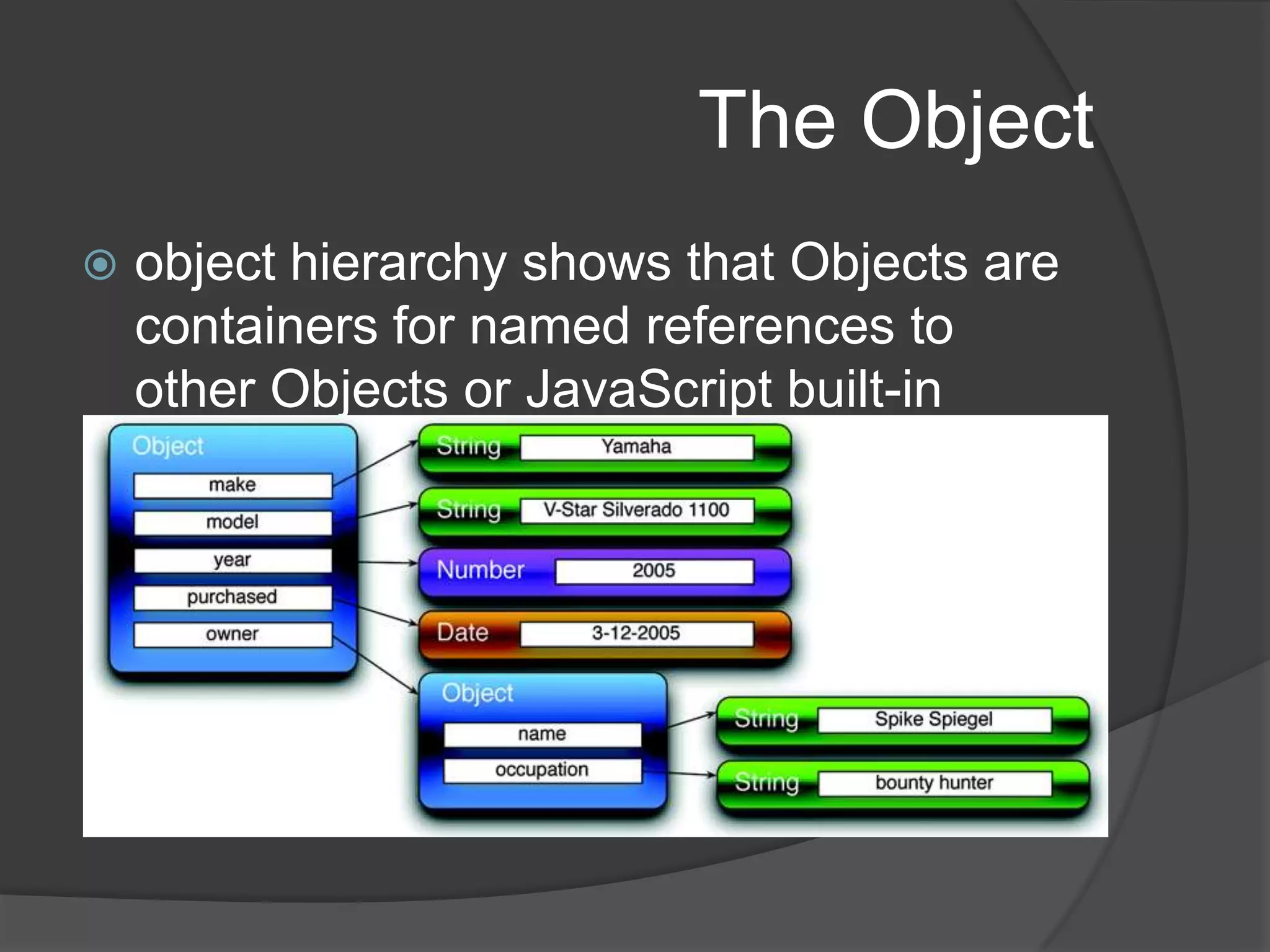
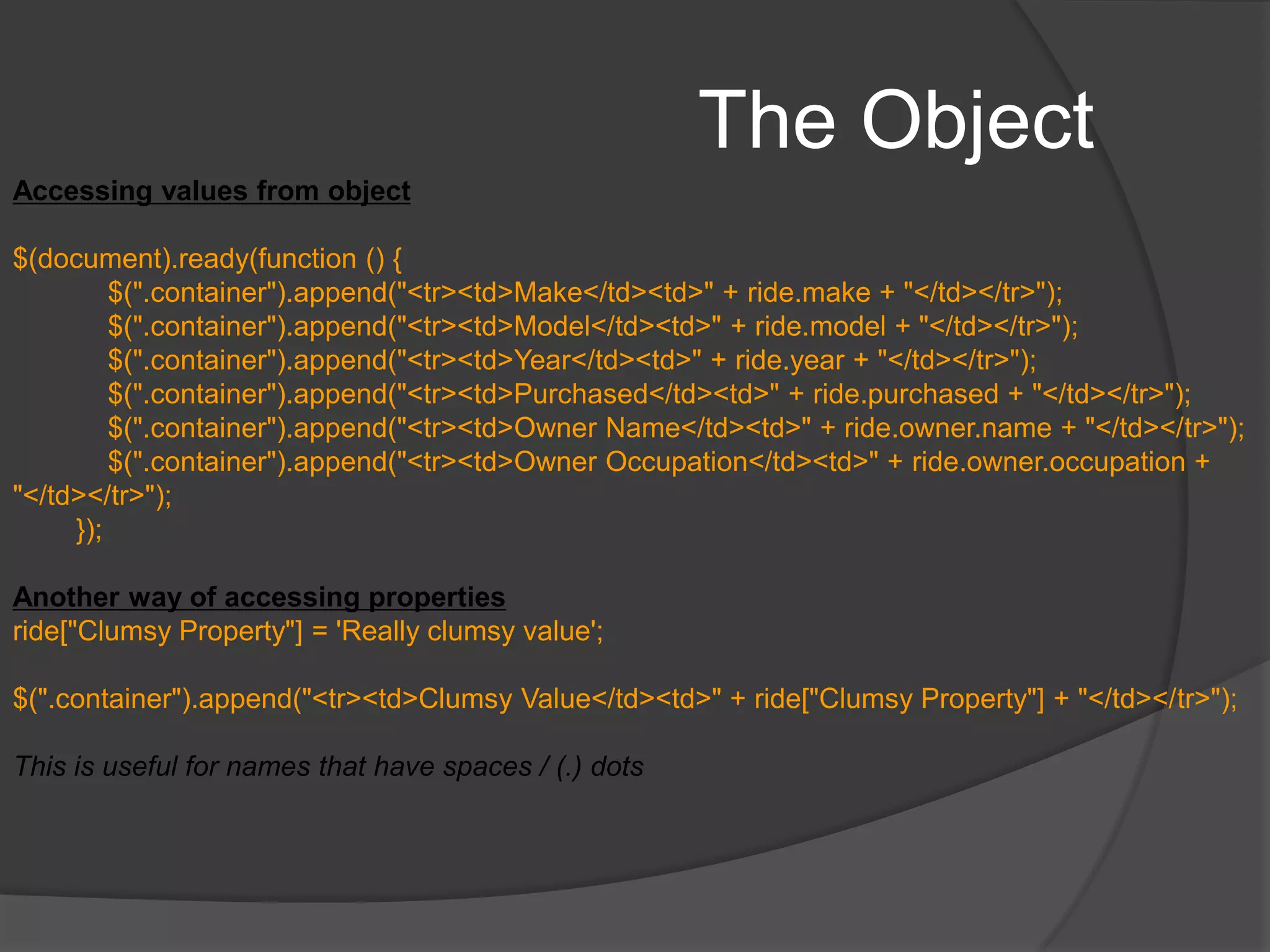
![The ObjectAccessing values from object$(document).ready(function () { $(".container").append("<tr><td>Make</td><td>" + ride.make + "</td></tr>"); $(".container").append("<tr><td>Model</td><td>" + ride.model + "</td></tr>"); $(".container").append("<tr><td>Year</td><td>" + ride.year + "</td></tr>"); $(".container").append("<tr><td>Purchased</td><td>" + ride.purchased + "</td></tr>"); $(".container").append("<tr><td>Owner Name</td><td>" + ride.owner.name + "</td></tr>"); $(".container").append("<tr><td>Owner Occupation</td><td>" + ride.owner.occupation + "</td></tr>"); });Another way of accessing propertiesride["Clumsy Property"] = 'Really clumsy value';$(".container").append("<tr><td>Clumsy Value</td><td>" + ride["Clumsy Property"] + "</td></tr>");This is useful for names that have spaces / (.) dots](https://image.slidesharecdn.com/ooinjavascript-110124111034-phpapp02/75/OO-in-JavaScript-15-2048.jpg)
![Object Literals (JSON)var ride = new Object();ride.make = 'Yamaha';ride.model = 'V-Star Silverado 1100';ride.year = 2005;ride.purchased = new Date(2005, 3, 12); ride["Clumsy Property"] = 'Really clumsy value';var owner = new Object(); owner.name = 'Spike Spiegel';owner.occupation = 'bounty hunter';ride.owner = owner;varrideJSON = { make: 'Yamaha', model: 'V-Star Silverado 1100', year: 2005, purchased: new Date(2005, 3, 12), 'Clumsy Property' : 'Really clumsy value', owner: { name: 'Spike Spiegel', occupation: 'bounty hunter' } };JavaScript Object Notation allows us to define object using literals - we no longer need to instantiate new Object() - reduces the work of defining name and then assigning value](https://image.slidesharecdn.com/ooinjavascript-110124111034-phpapp02/75/OO-in-JavaScript-16-2048.jpg)
![JSON : Rules for definition{ "firstName": "John", "lastName": "Smith", "age": 25, "address": { "streetAddress": "21 2nd Street", "city": "New York", "state": "NY", "postalCode": "10021" }, "phoneNumber": [ { "type": "home", "number": "212 555-1234" }, { "type": "fax", "number": "646 555-4567" } ] }{ defines start of a an object. } defines the end.[ defines start of an array. ] defines the end.Name and values are separated by :](https://image.slidesharecdn.com/ooinjavascript-110124111034-phpapp02/75/OO-in-JavaScript-17-2048.jpg)
